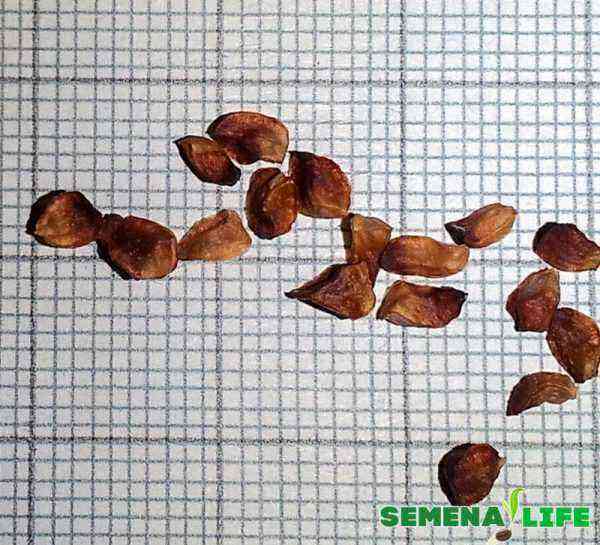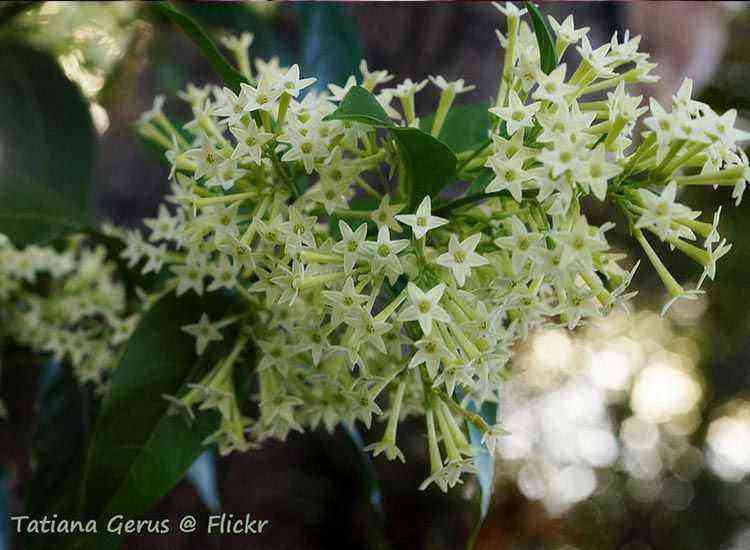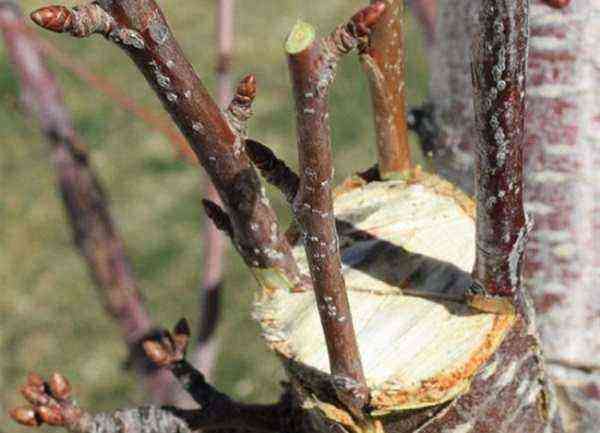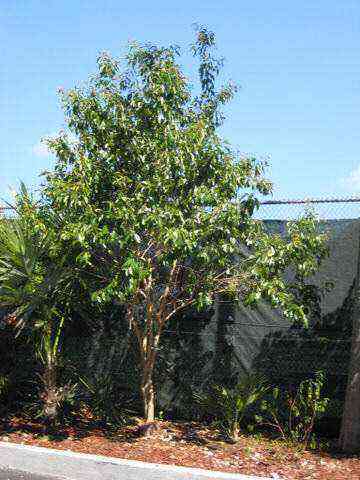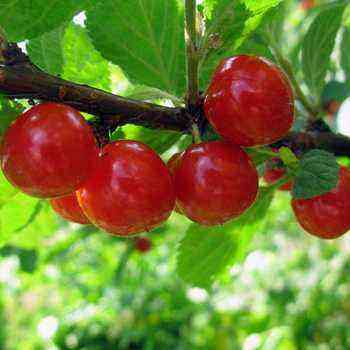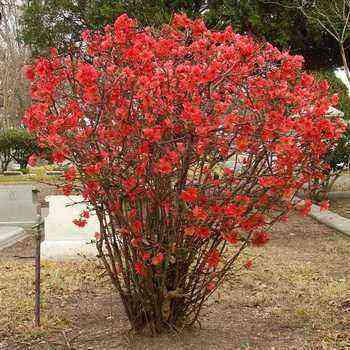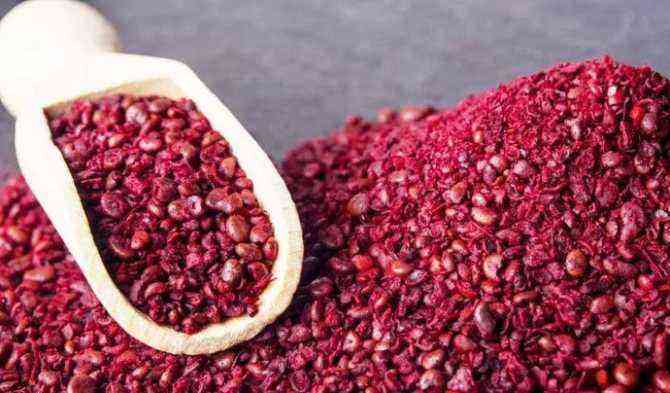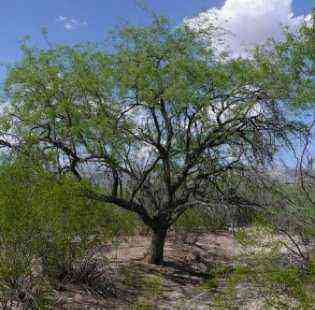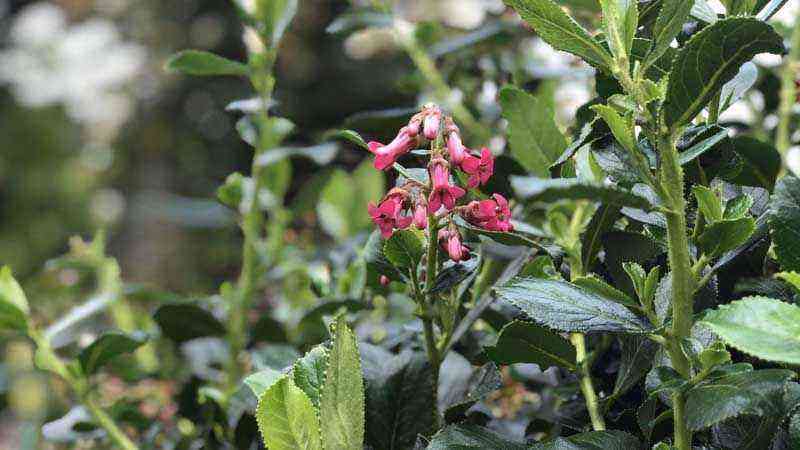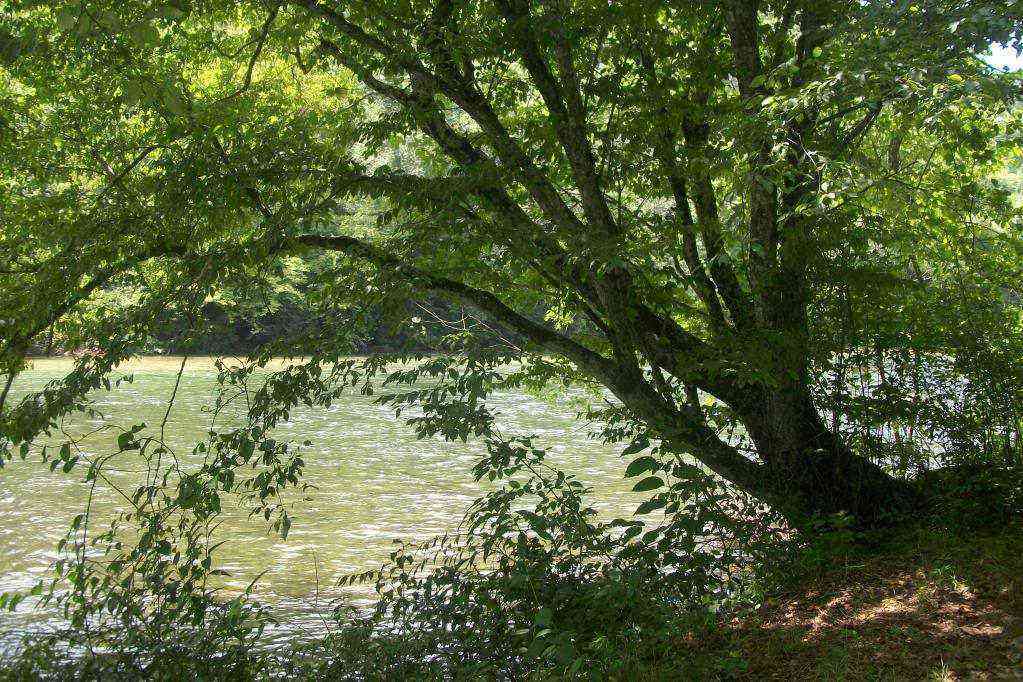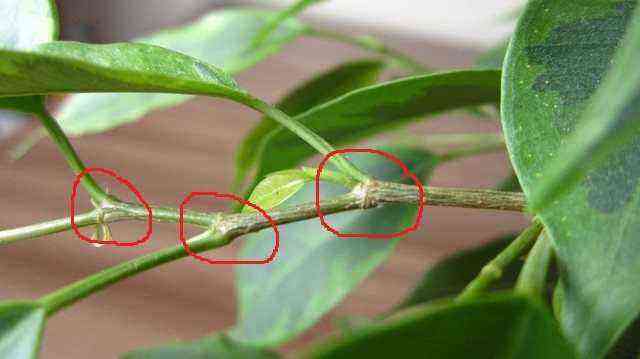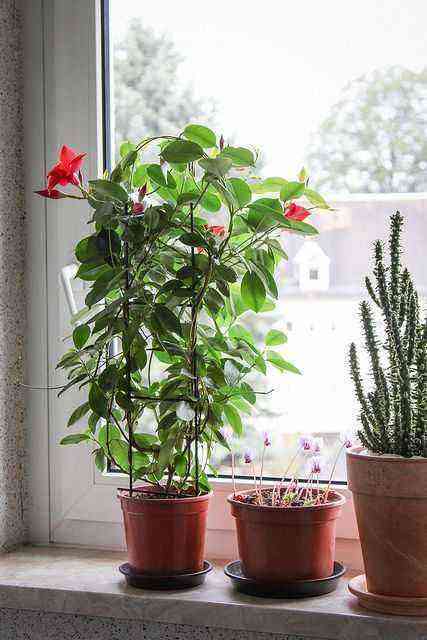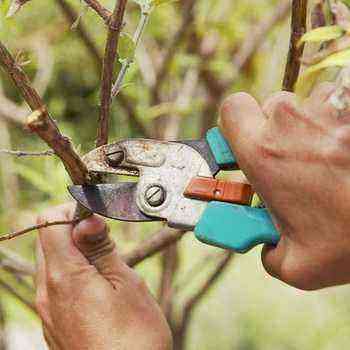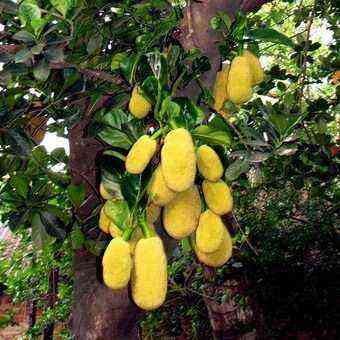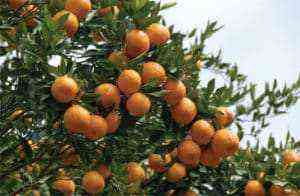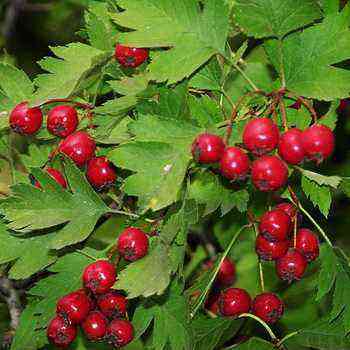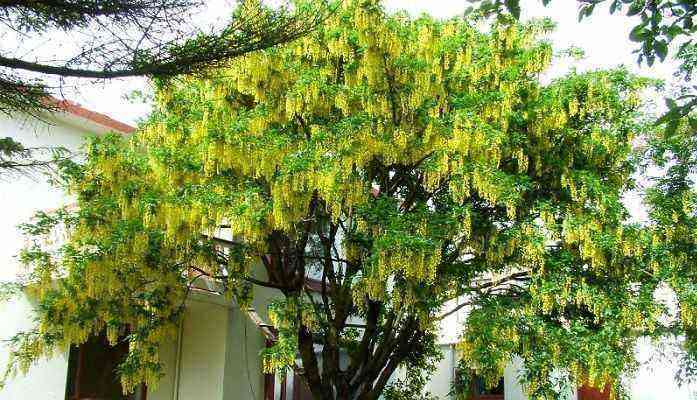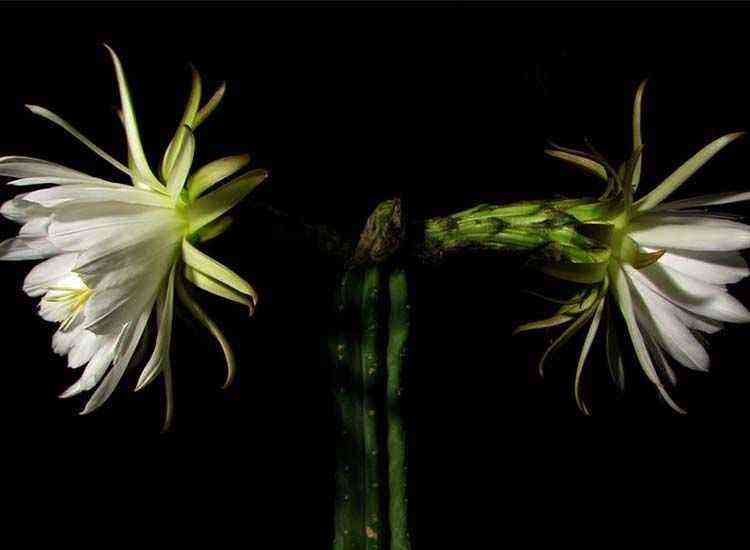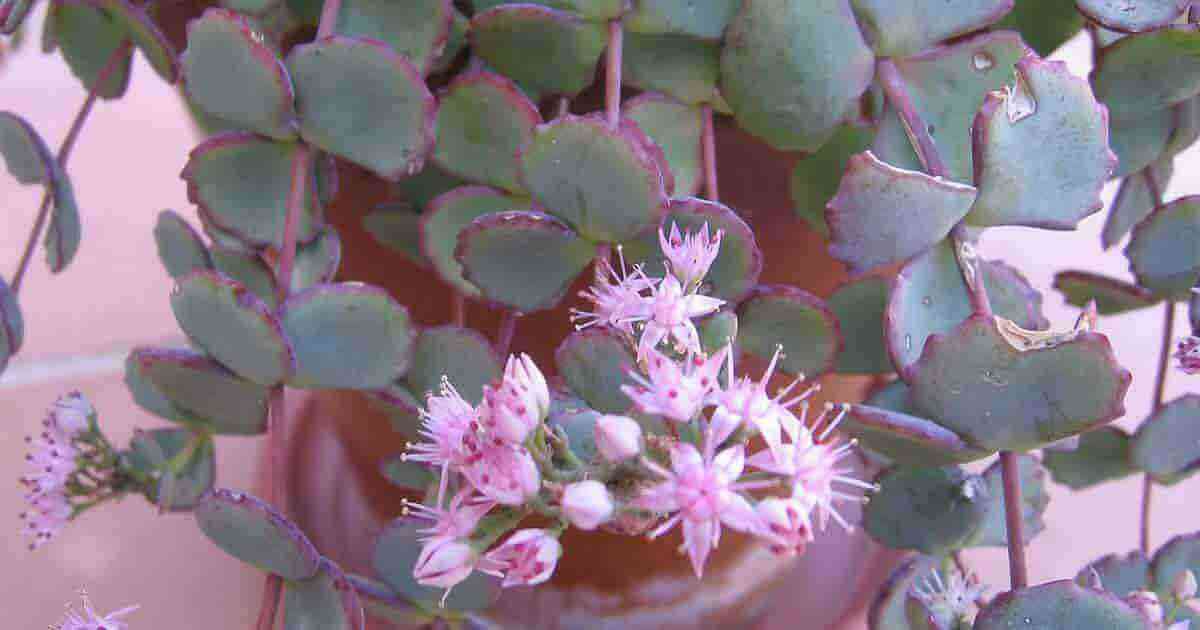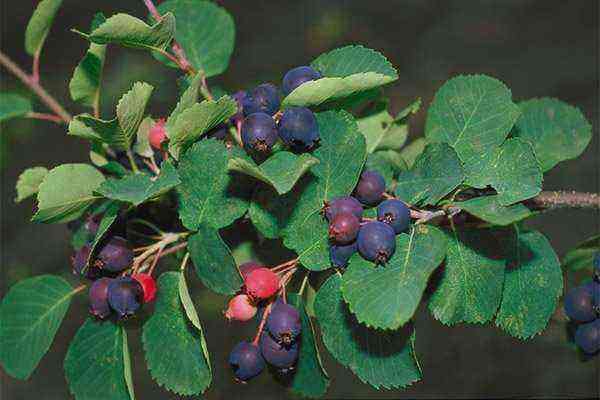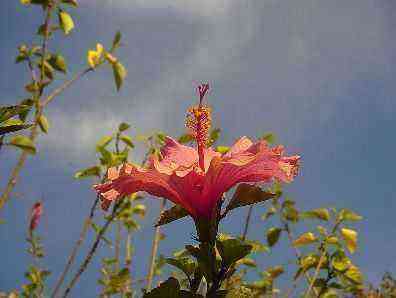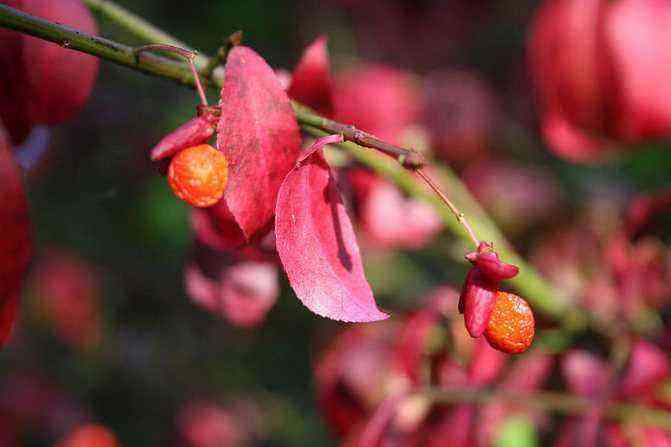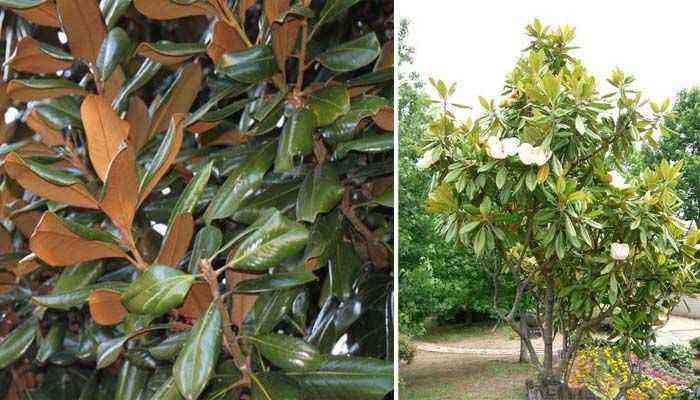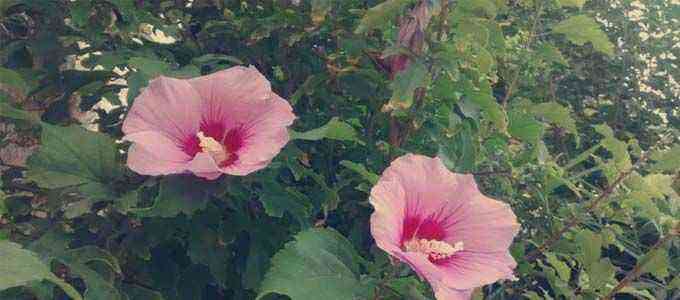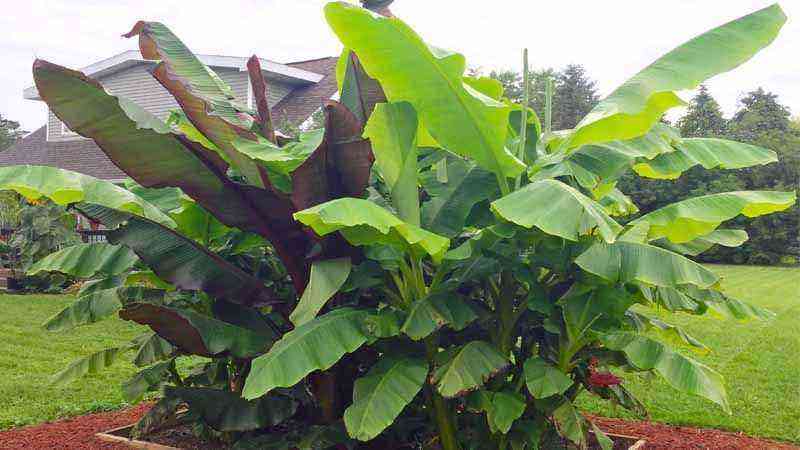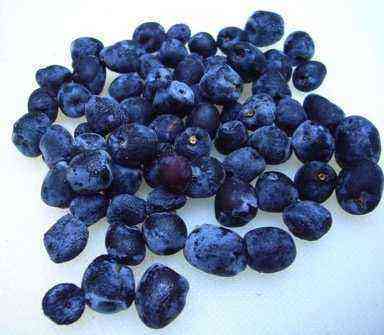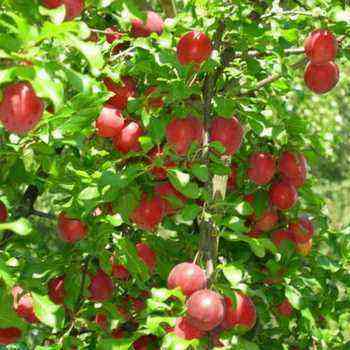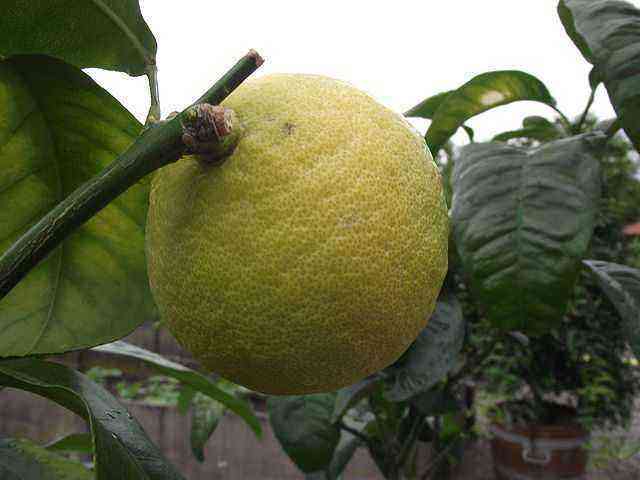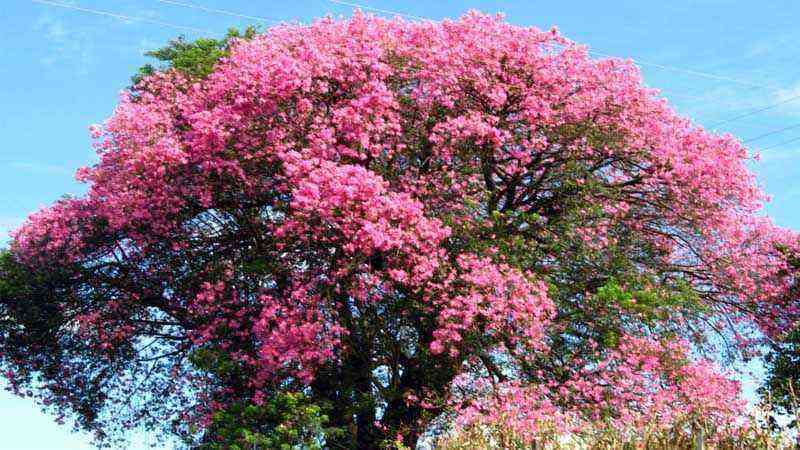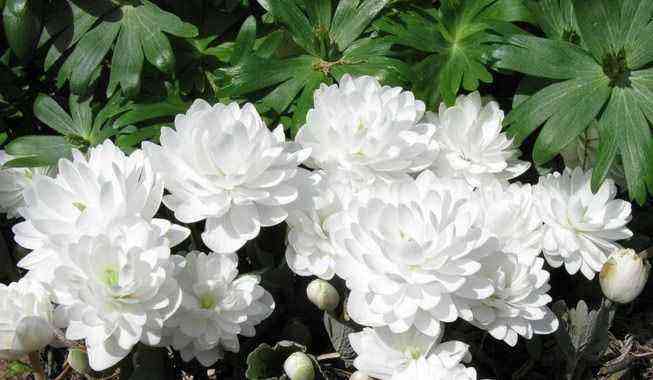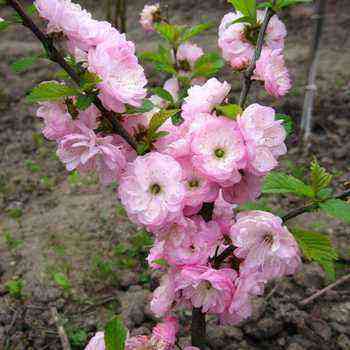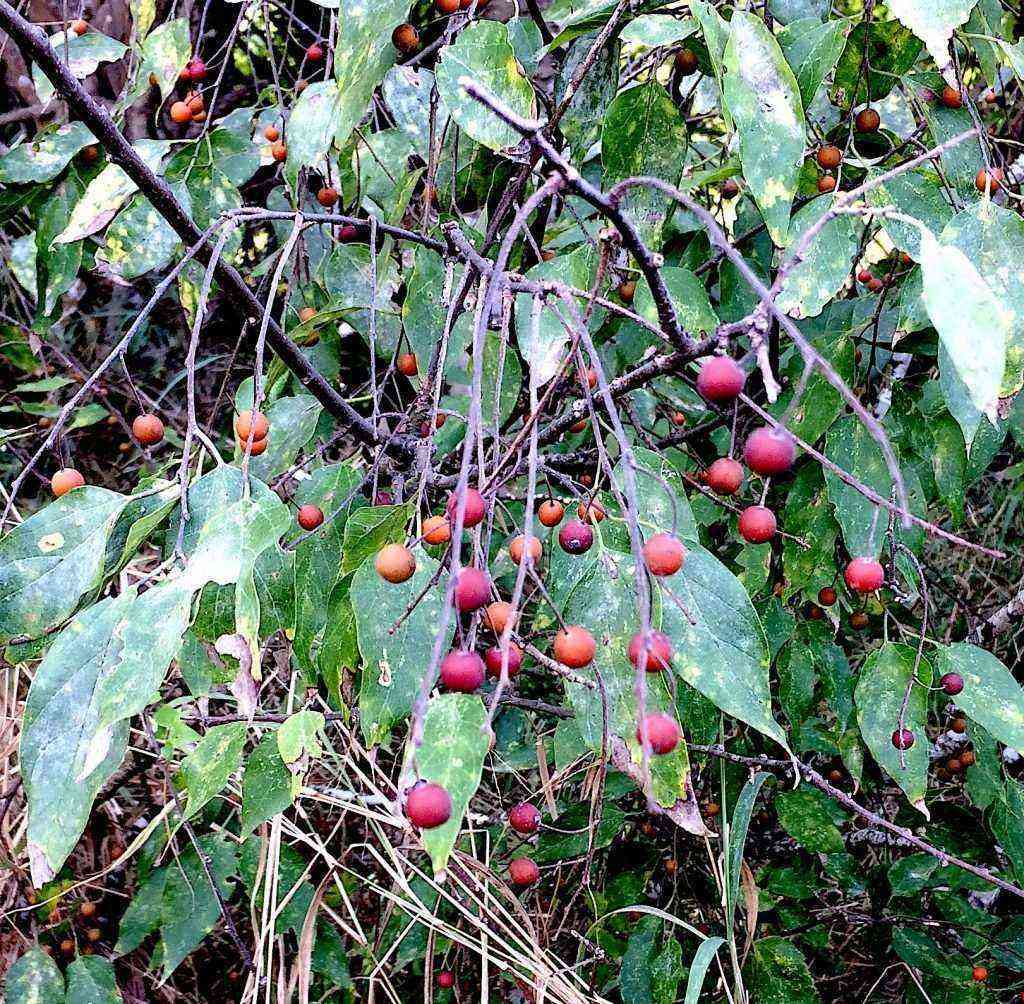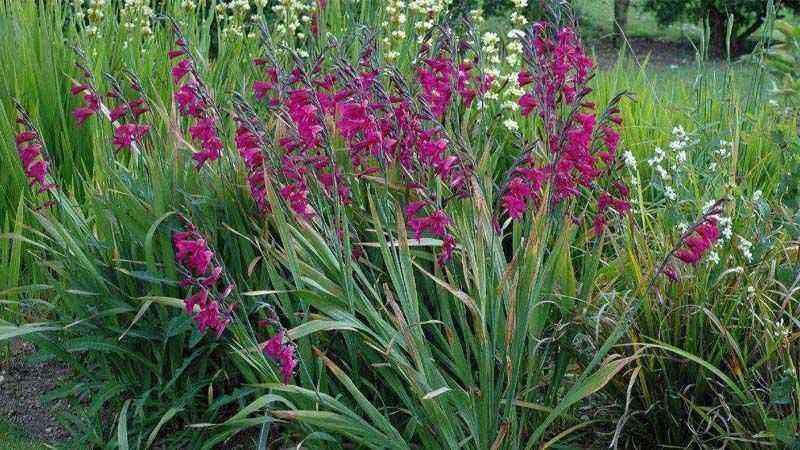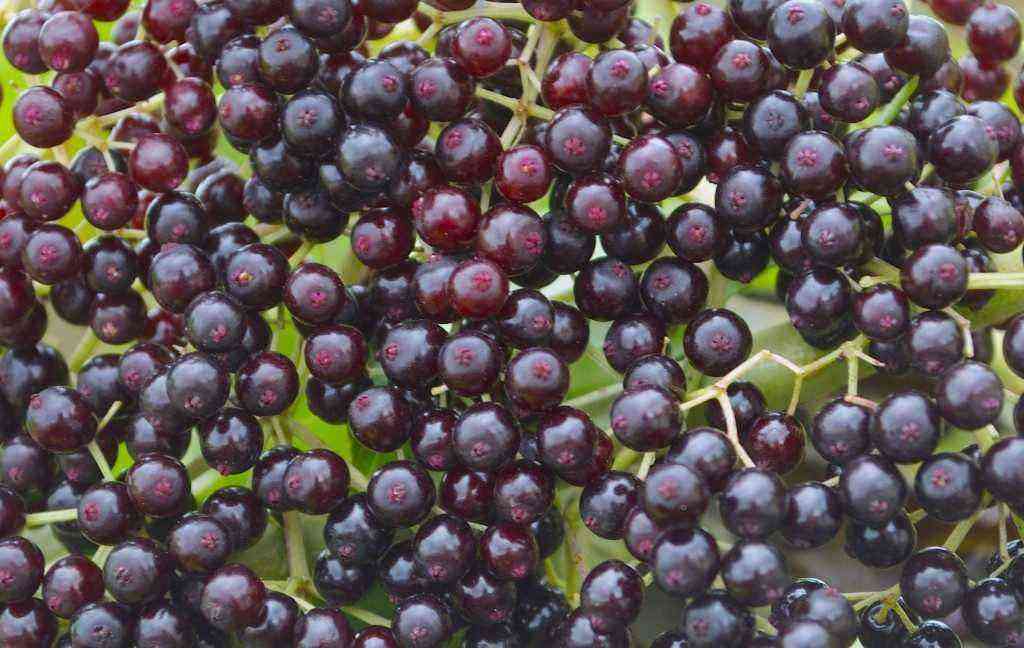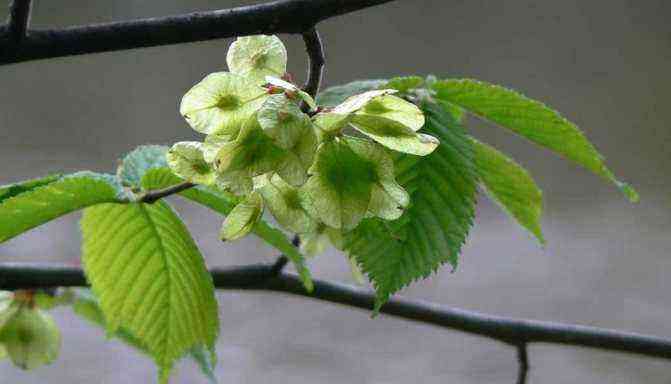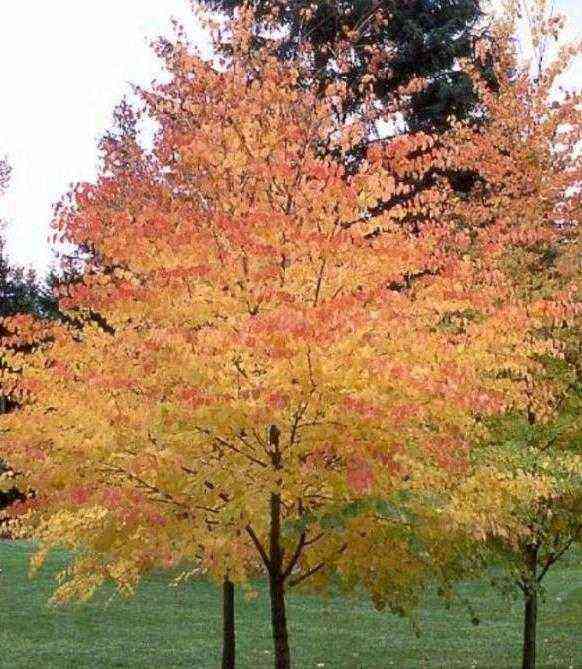Getting seeds at home
Like all ancient evergreens, cypress has cones with which it reproduces in the wild. Planting material is obtained from ripe cones. It can also be purchased at gardening stores, but this is not required. Seeds are easily obtained from mature cones, and their germination level practically does not differ from purchased ones.
How to collect cypress seeds
You can get seeds for planting by purchasing them in a special store. But if possible, it is better to collect the planting material yourself.
Important! To check the germination of seeds, several of them can be opened. The dead seed will be empty with a little resin, alive
—
contain a white or yellow embryo.
Cypress cones season begins closer to autumn. It is better to collect them from trees growing in a group in order to get healthier seeds after cross-pollination. Cones can be plucked from cypress trees or picked up intact, lying on the ground.
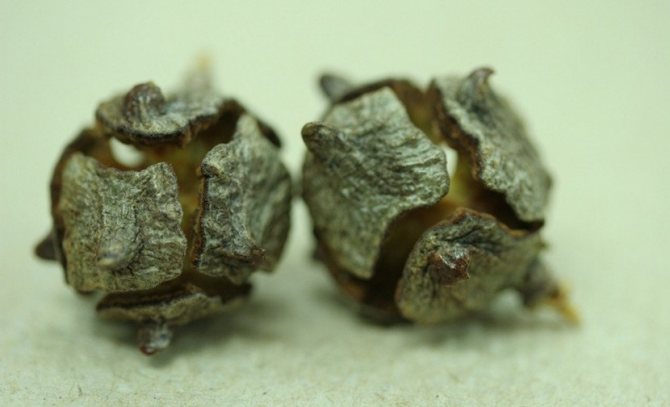
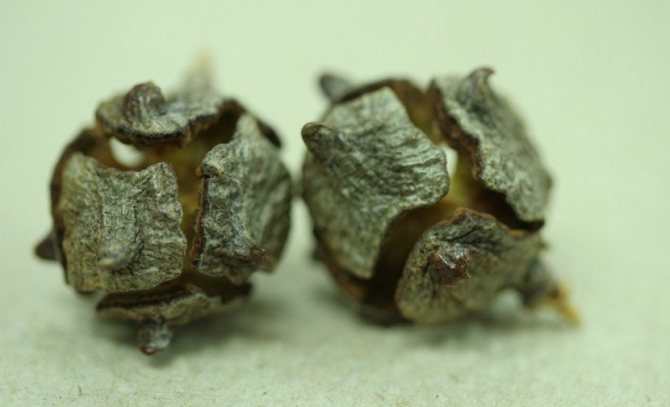
After collecting the cones, you do not need to open them yourself, you need to wait for this process to happen on its own – then the seed flies out with a little shaking.
Features of growing cypress from seeds
Due to the fact that this tree is very thermophilic, it is not very popular among breeders in central Russia. After all, it is difficult for a plant to survive a harsh winter and often it simply dies before it reaches the warm season. That is why it is necessary to germinate seeds at home, where the optimum temperature will be provided for them. The whole process takes place in several stages:
- Stratification. This complex word means keeping the planting material in the cold (in modern conditions, it is easiest to use a regular refrigerator). The seeds of many conifers and evergreens must go through such a mandatory “wintering”, otherwise they will not be able to give normal shoots. The stratification should last 3-4 months. Soak. Before planting directly into the ground, the seeds must be soaked in warm water for 10-12 hours. This will help them swell.
- Landing. The most suitable option for cypress is the standard layout in the ground: 4×4 cm. But the pots for these trees can not be used, ordinary wooden boxes will be enough. The main thing is that they have a suitable length and not be too high, otherwise the seedlings will die.
- Another way of germination is to pre-place the seeds in sawdust or sand mixture. In such an environment, they must be allowed to give their first shoots, and then transplanted into the ground.
- Transfer. The germination rate of cypress seeds is approximately 50%, so it is worth taking planting material with a margin in advance. After the first bushes begin to grow and reach 5 cm in height, they will need to be placed in separate pots. Otherwise, the trees will begin to interfere with each other and will not be able to reach their normal size. It is better to keep young animals at home, in order to prevent them from freezing. After 10-12 months, if climatic and weather conditions allow, the seedlings can be taken out into the yard so that they stand under the sun.
This is a general scheme for germinating cypress bushes from seeds. However, it requires special care at home. Let’s tell you more about it.
Reproduction of cypress
There are three ways of plant propagation. Consider how to propagate a flower with each of them.
Cultivation from seeds
This method is used in the second half of spring. Growing from seeds at home begins with the right harvest:
- Collect them from ripe open cones.
- After collection, place in a refrigerator for 3-4 months.
- When the sowing time comes, they are subjected to 12-hour soaking in a growth stimulant solution (“Athlete”, “Zircon”, “Kornevin”).
The container prepared for planting is filled with drainage from crushed pieces of bark and soil mixture for conifers, the soil is moistened.
Посмотреть эту публикацию в Instagram
Posted by Natalia (@allie_sky) Aug 30, 2020 at 8:43 AM PDT
Seeds are distributed according to the 4×4 cm scheme. 1 cm of soil is poured on top. Place the container in a warm place. Within 3-4 weeks the soil is periodically moistened.
By the end of the 4th week, the seeds germinate. At this time, it is necessary to provide the sprouts with diffused lighting.
Attention! Seedlings are transferred to separate pots when they grow up to 5-6 cm.
Cutting
Now how to grow a tree from cuttings. The material is harvested during pruning, somewhere in April… The twigs are cut with a knife (take the apical or semi-lignified shoots).
Having cleared the bottom of the cutting from scaly leaves, it is immersed in a biostimulant solution for 24 hours. Then they take it out, treat the cut with coal powder and deepen it into the ground by 1/3 of the length, drop it in and wate it.
Cover the stalk with a jar or film, continue to regularly air and water. It takes about 2 months to fully root the cuttings.
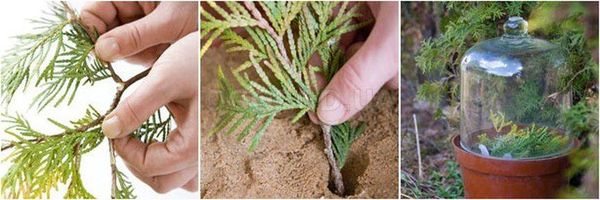

Layers
Reproduction by layering is important for plant varieties that have a wide spreading crown. The process itself looks like this:
- take a second pot of soil and place it next to the donor container;
- a twig of a donor plant is bent to the soil of a new pot;
- cut the bark on it;
- pressed with a stone or other device so that the branch does not straighten;
- sprinkle the layer with soil.
They are cared for in the same way as for the donor plant. As soon as the shoot takes root, it is cut off from the “mother”.
Care of seedlings
As an ornamental plant, cypress is quite capricious. For example, it needs to be sprayed frequently, but not watered, to avoid decay. The most vulnerable part of the shrub is the root system. It takes a long time to form and requires additional strengthening. You can fertilize seedlings with a mixture for conifers about 1 time per month. Also, during transplantation, it is not necessary to deeply deepen the roots, they should be closer to the surface, so it is easier for them to assimilate nutrients.
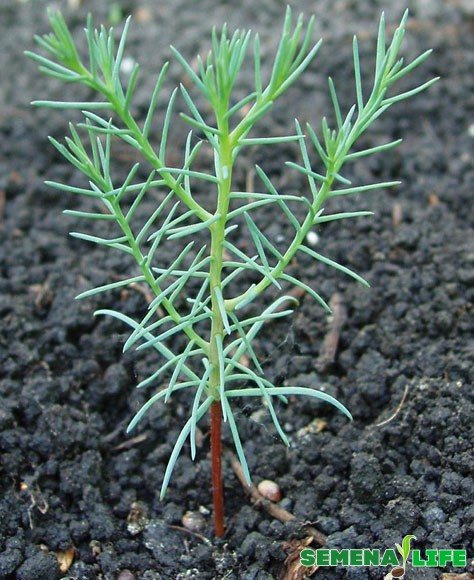
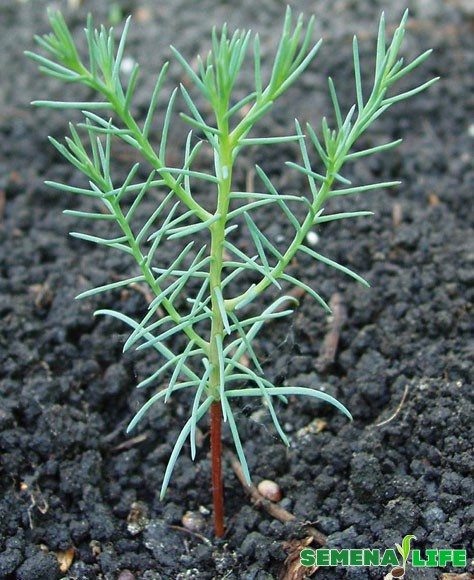
Pests and diseases
At low humidity, cypress attacks spider mite, find on it and shield… To get rid of pests, the flower is sprayed with Actellika solution.
Treatment frequency is once a week for 1 weeks. As for diseases, then most often the flower suffers from root rot.
Root rot
The disease occurs against the background of waterlogged soil. Stagnant water is not removed, the roots cannot withstand excess moisture and begin to rot.
Removing damaged roots and transplanting into new soil will help save the pet. After that, it is important to normalize the watering regime.

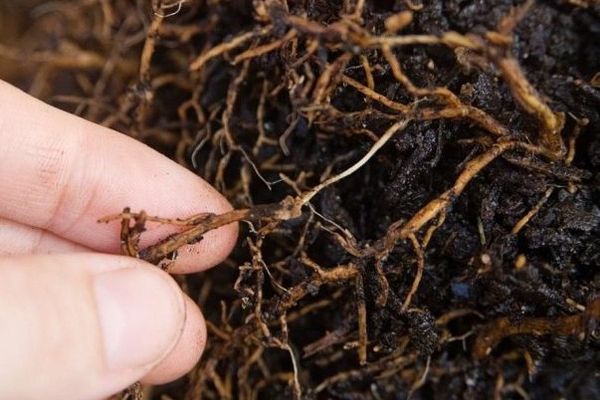
Useful Tips
As we have already found out, growing a cypress tree from seeds is not an easy task. For its implementation, only patience and enthusiasm is not enough, it is necessary to strictly follow all the rules. We will give a few more recommendations, which, according to breeders of conifers, will help to achieve the best result. First, try soaking the seeds before planting, not in plain water, but in a root or epin solution.
Roots are the weak point of thermophilic conifers, so such preliminary feeding will not hurt.
Secondly, be careful about the choice of soil. Of course, you can use ordinary soil, but it is better to purchase a special soil mixture. The best option would be a soil composition for conifers, which can be purchased at any specialty store.


The third trick involves using crushed tree bark as natural drainage. It can be poured onto the bottom of the box just before planting and covered with soil from above. Thanks to this, cypresses will better absorb moisture and will not suffer from an excess of it. You can buy bark from the fertilizer department or prepare it yourself (in the second case, you will need some experience in this matter, so if you are not confident in your abilities, it is better not to risk it). The last tip concerns transplanting young stock into open ground. This should be done no earlier than a year after the appearance of the first shoots.
The main signs of the readiness of the seedling for independent development will be the lignification of the trunk and the appearance of a normal branched root system.
Of course, you shouldn’t put the bushes in the ground in cold weather. Focus on the climatic features of the region and remember that in some parts of Russia, cypresses, even on the street, can exist only as a potted culture.
Care instructions
Caring for this tree primarily involves regular watering, on average once a week. One watering requires 10 liters of water for one tree. But in hot and dry weather, the plant needs more abundant and frequent watering.
Remember to spray the seedlings with a spray bottle every day. For an adult tree, 1-3 sprays per week are enough.
If the area around the cypress tree is mulched with chips or peat, which retain moisture well in the soil, then water the plant only when the top layer of the earth dries up.
If for some reason you did not mulch the site, then after each watering you will have to remove weeds and deeply (15-20 centimeters deep into the soil) loosen the soil on the site.
What can you feed
The first feeding of young plants is carried out only two months after planting. It should be noted that the concentration of the solution should be two times weaker than for an adult plant.
Adult trees are fertilized with complex compounds twice a month until mid-July. Kemira, designed specifically for conifers, has proven itself well as such top dressing. 100-150 grams of Kemira are scattered over the near-trunk circle of a cypress tree, sprinkled with soil and the trees are watered.
From the middle of summer, plants stop fertilizing so that they have time to prepare for winter.
Nuance when transplanting
Transplanting cypress trees is carried out in the spring according to the same principle as the initial planting in open ground. But before you start digging up the plant, it is worth remembering that it has a branched root system that grows in a horizontal direction. This information will help you think about how best to remove the tree from the ground without damaging its roots.
Wood trimming
Cypress care also includes pruning the crown regularly. At the beginning of spring, it is worth carrying out a sanitary shearing of the tree, that is, cutting off frozen shoots, dry and damaged branches. In addition, it is necessary to form the crown of the plant. Usually this procedure consists in maintaining a natural shape – pyramidal or conical.
Keep in mind: you cannot cut more than one third of the green mass in one haircut. In autumn, at the end of the growing season, in order for the crown of the cypress to become even thicker, it is necessary to cut off a third of its growth for the current year, while maintaining the natural shape of the plant.

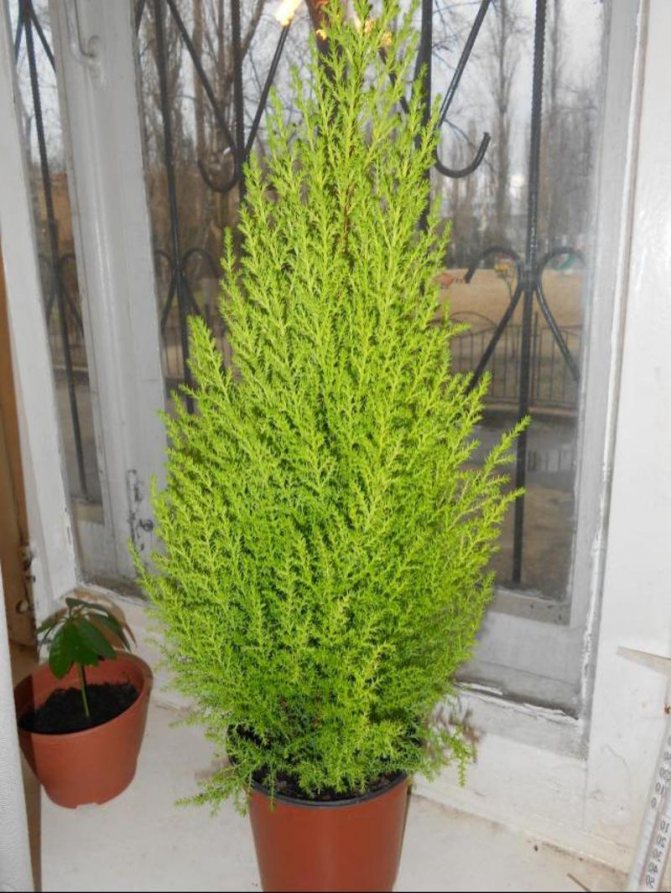
Never leave bare branches on the tree, as they will dry out anyway. Crown pruning begins only a year after planting and transplanting the cypress.
Diseases and pests
Such conifers are resistant to diseases and pests, but sometimes they are still affected by scale insects, spider mites and root rot. The vital activity of spider mites leads to the fact that the plant begins to turn yellow, and then loses its leaves. Ticks can be destroyed by repeatedly treating the tree with Neoron, Apollo or Nissoran acaricides at weekly intervals.
The scale insect feeds on plant sap, which disrupts the supply of moisture and nutrients from the soil to the leaves. Because of this, the cypress dries up, and its foliage falls off. This pest can be eliminated by spraying with Nuprid or another preparation with a similar effect. If the defeat is total and it is impossible to get rid of the pest, then it is better to dig up the diseased tree and burn it in order to avoid contamination of other plants.
Root rot is a fungal disease that occurs when moisture stagnates in the soil at the roots. That is why it is important when planting or transplanting a plant to lay a thick drainage layer of broken brick and sand in the hole. If the disease is not detected in time, then it can lead to the death of the tree. A diseased cypress should be dug up, cut off the affected roots to healthy tissue, treated with a fungicide throughout the root system and transplanted to another place. If the disease has already destroyed all the roots, the cypress cannot be saved.
Preparation for wintering
Winter-hardy species and varieties need mandatory shelter for the winter for the first 3-4 years of life after planting in open ground. Moreover, this is necessary not for salvation from frost, but for protection from bright winter and spring sunlight. To do this, wrap the cypress trees with acrylic, burlap, kraft paper or lutrasil.
In the Urals, in the Moscow region and Siberia, cypress is rarely grown in the open field. It is best to keep such plants in large tubs and bring them indoors in the fall. In warmer regions such as Crimea, Moldova and Ukraine, these trees grow quietly in the garden and hibernate without shelter.
How to grow cypress from seeds?
How to grow cypress at home? In order to grow cypress at home, you need its seeds.
You can buy them in the store or prepare yourself if you have the opportunity to collect ripe, but not yet opened, cypress cones. They need to be folded into a cardboard box and wait until they open.
Landing
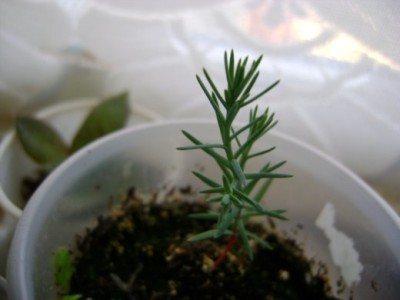
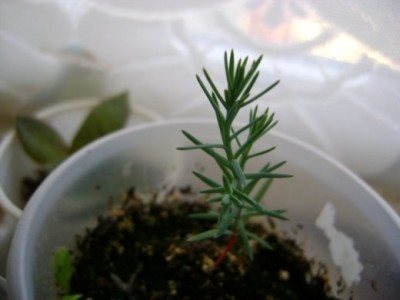
The most preferred season for sowing cypress seeds is the second half of spring.
The soil for a cypress should consist of one piece of peat land, one piece of turf land, one piece of sand, and two pieces of leafy soil.
The prepared soil must be poured into a pot or container, then moistened and tamped.
First, seeds are poured onto the surface of the earth, and then they are covered with a layer of soil, the thickness of which should be from seven to ten millimeters.
After that, you need to sprinkle the soil in the seed pot with water and cover it with foil or glass. The pot should be placed in a warm place and wait a couple of weeks until the seedlings appear.
Remove the shelter often to ventilate the seedlings, and eventually remove it permanently. Do not forget to keep an eye on maintaining optimal soil moisture, as a lack or excess of water can destroy the seedlings.
Seating
When the height of the seedlings reaches five centimeters, they should be transplanted into hotel containers, which can be used as ordinary plastic glasses with a volume of five hundred milliliters.
At the bottom of each cup, it is necessary to make holes, the diameter of which should be about five millimeters, and pour expanded clay on the bottom. This will create drainage.
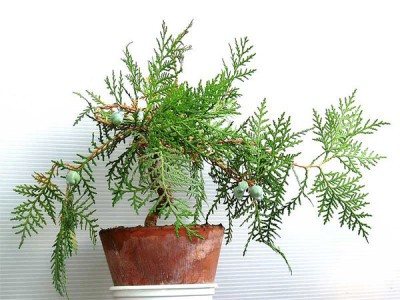
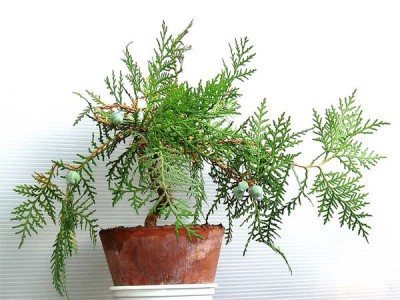
For planting seedlings, you should use the same soil as for planting seeds, but you need to take not one, but two parts of the sand.
Feed your seedlings monthly with complex fertilizer, and after a year it is advisable to transplant them into pots.
Best of all, cypress will grow in a tall narrow pot, at the bottom of which drainage from expanded clay or broken skulls will be poured.
The first four to five days after transplantation, cypresses should be in diffused light, and after this period they can be exposed on a sunny windowsill. Best of all, if it is an east or north window sill. For the winter, cypress can be exposed on a glazed loggia with good lighting and kept at temperatures from fifteen to seventeen degrees above zero.
You can form the required height and shape of your cypress by pruning. The plant begins to bear fruit when it reaches the age of five to six years.
For details on how to care for cypress at home, read here, and from this article you will learn about what diseases and pests threaten it and what needs to be done to avoid them.
Planting cypress
The southern handsome man does not tolerate noise, and the seedlings will need an area away from the roadway. Cypress loves light, but is afraid of direct sunlight, so choose a place for it in the country that goes into the shade for at least a few hours a day.
When planting a southerner in open ground, make the distance between the holes so that the cypresses do not shade each other when they grow up. Their size varies from 1 m (low-growing bush) to 25 m (large-sized). In nature, it is able to grow up to 40 m, but in suburban conditions it is unlikely to reach such dimensions.
Old cypress trees
The cypress will be grateful if you plant it in soil half diluted with coniferous humus. If humus is not available, use such a soil substrate: peat, sand, sod land, leafy soil – 1: 1: 1: 2. Move your pets to open ground with a large clod of soil on the roots in order to avoid damage to the root system (cypresses are capricious when transplanting). Make the holes 50% larger than the size of the earthy coma, and when pouring in the soil substrate, lightly tamp it with your hands. Place the root collar (as in the case of transplanting seedlings) flush with the soil. Do not forget to dig in the support in advance – you can use an ordinary wooden peg. After planting, tie the tree trunk to a support. That’s all))
Description of cypress
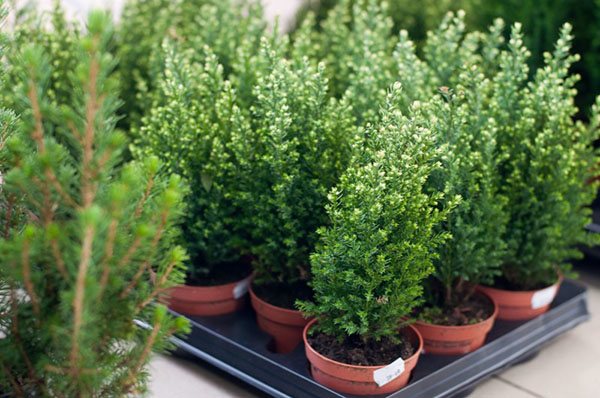
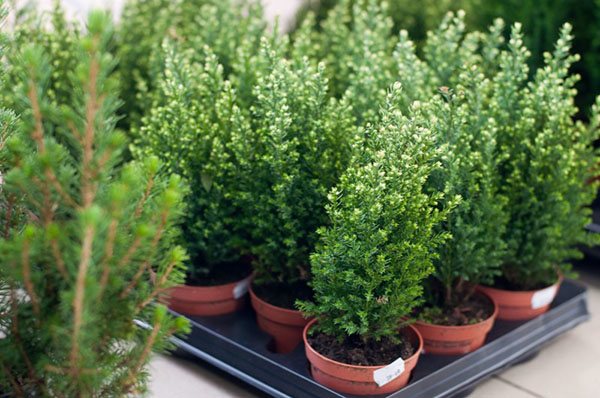
This is a unique culture that is able to purify the air better than others. By releasing a large amount of phytoncides, cypress kills bacteria and viruses. Due to these abilities, the plant is often grown in living rooms.
Cypress grows as a bush or tree. This plant forms a spreading crown, but more often has the shape of a pyramid. In young evergreen specimens, the leaves are small in the form of needles. With age, they bend more tightly to the branches, covered with small scales. Since this is a representative of monoecious plants, there are female and male cones on one individual. They ripen only in the second year, forming small seeds attached to the underside of the “wings” of the cones.
The homeland of cypresses is the territory of the tropics and subtropics. But there are also frost-resistant varieties. At home, a large-fruited version of the plant is bred.
Cypress is even mentioned in the Bible. This is one of the trees that adorned the Gardens of Eden. Christians consider cypress to be a symbol of eternal life.
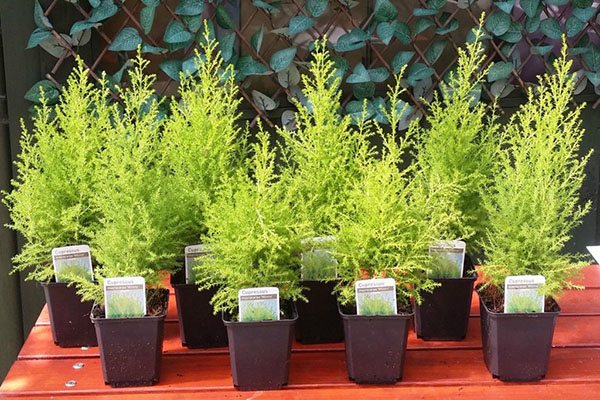
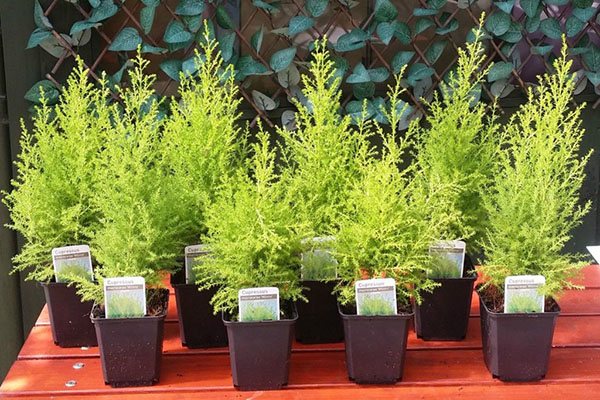
In shops selling indoor flowers, you can most often find the Goldcres variety. It has yellowish needles with a golden tint. A neat compact tree does not take up much space and is suitable even for small apartments or office spaces. With proper care, it will help create a corner of the Garden of Eden anywhere.
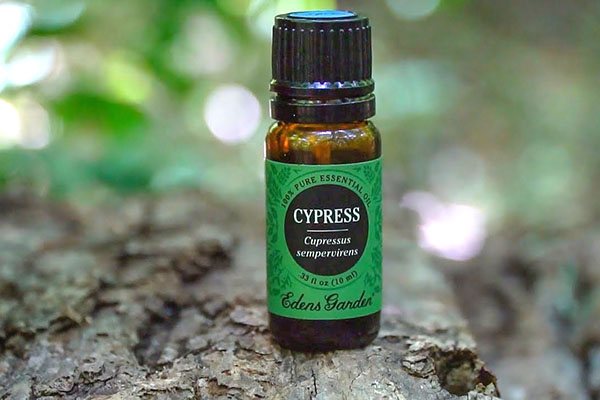

Indoor cypress is very beneficial for its essential oils. Due to its specific smell, this plant is able to repel various insects. The oil is extracted from the cones by distillation. Many diseases can be cured with it. Also, oil is an excellent prophylactic agent.
Properties of cypress oil:
- copes with unpleasant odors;
- eliminates inflammation, heals wounds;
- has a calming effect;
- is a good tonic;
- stops blood and heals cuts;
- relieves headaches.
Also, cypress oil evens out hormones. It helps to cope with colds, viruses, heals bleeding gums. Cypress oil is an excellent cosmetic product. It eliminates dandruff, helps oily and problem skin, relieves rashes.
Cypress: how to use a plant in the garden
In landscape design, cypresses have taken their worthy niche as a spectacular element of home or outdoor gardening. Naturally, there are some nuances of using cypress crops in decorating summer cottages and garden plots. They are mainly related to the conditions in which the plants were grown.
So, for example, McNab and Californian cypresses remarkably strengthen the sandy areas of the site, decorating them. They also look harmonious in group mixed ensembles and in single plantings. Cypresses provide good protection from the wind, so these shrubs will not only be a spectacular decoration in the country and in the garden.
Garden Arizona Evergreen Cypress perfectly adapted to the clipping, which makes it an excellent element for the formation of hedges.
Pyramidal – the most decorative representative of cypress trees. Such shrubs planted in a group will become a real decoration of your garden. Its horizontal shape makes it ideal for group plantings and trimmed walls.
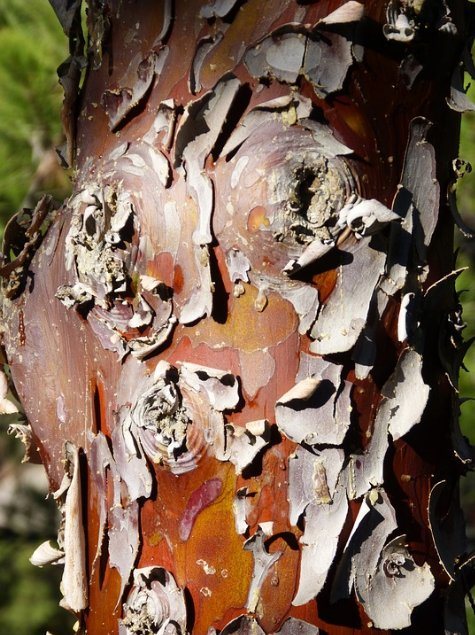

Large cypress looks spectacular in container landings.
Among other things evergreen cypress wood It is widely used in house construction, shipbuilding, in art with applied arts and in cosmetology as the main ingredient of aroma oils.
And the medicinal properties of cypress have been known since ancient times.
Did you know? Cypress wood has a fungicidal effect, and its smell repels insects.
Plant care at home
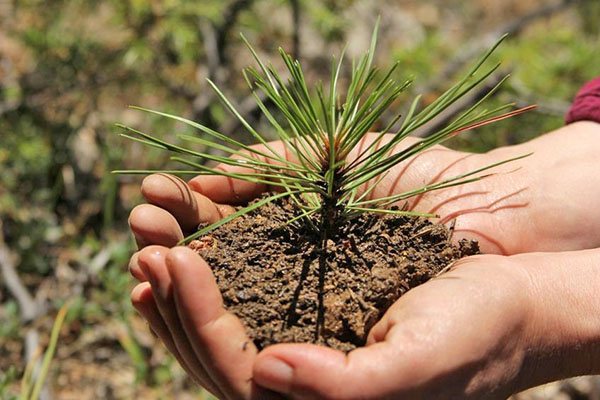
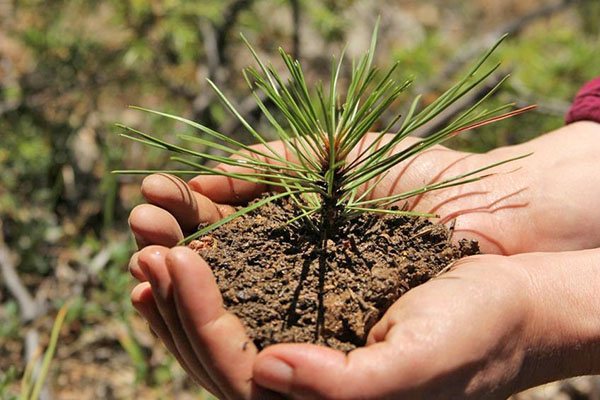
This plant is not so whimsical as to cause a lot of trouble for its owners. But despite this, there are certain rules for caring for indoor cypress at home, which are important to know and follow.
Nutritious soil with high breathability
A home tree grows quickly, so it is important for it to provide a sufficient amount of minerals and organic matter. The soil for the cypress should not be dense. This can lead to the accumulation of large amounts of water. Excess liquid often causes root rot, which is dangerous for the plant.
Before caring for a cypress in a pot, you should carefully study the information about it.
Good lighting is the key to the health of the cypress


The plant loves bright sunlight. Otherwise, its foliage will begin to turn yellow and crumble. Cypress trees shade only in hot summer. In the warm season, it is taken out into the fresh air for sunbathing, and in winter they provide additional lighting with the help of lamps.
Reproduction
The plant is propagated by seeds, cuttings and layering.
The first method is rarely used indoors, since it is the longest and most laborious. It is much easier and faster to propagate cypress by cuttings.
Apical cuttings root quickly enough in the ground… They are cut in April and buried in a container filled with earth. It is useful to cover them for rooting with foil and moderately moisten the ground.
Layers are prepared in spring from the lower shoots of the tree. Their bark is incised, the shoot itself is bent to the ground so that the incision is on the surface of the soil.
Then the shoot is firmly fixed to the ground with a metal bracket. Usually, by autumn, the cuttings have already formed roots and begins to develop as an independent plant.
How to grow cypress from seeds?

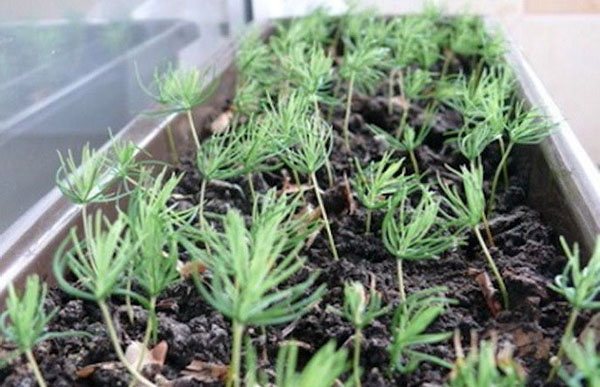
Before growing a cypress from seeds, you should know some rules, namely when it is best to sow grains. The optimal period is April-May. These can be store-bought seeds or self-picked from ripe buds.
To do this, you need to prepare a mixture in the following proportions:
- earth with leaves – 2 parts;
- peat mixture – 1 part;
- turf – 1 part;
- sand – 1 part.
Before planting cypress seeds, you need to cover the pots with prepared soil. Then water the substrate a little and tamp. Planting material is laid out on top, covered with a layer of earth up to 1 cm high. The upper ball of soil is sprayed from a spray bottle. The pots are removed to the greenhouse. Shoots should appear after a couple of weeks.
When transplanting sprouts into permanent pots, good results will be obtained by applying a complex fertilizer with long-term exposure. It is designed for two years and will provide complete feeding of the cypress during this entire time.
The mini-greenhouse must be periodically opened, as the seedlings grow up, this should be done more often. Over time, the greenhouse is removed. When growing cypress from seeds at home, you need to monitor the moisture content of the soil, but do not overflow the plants.

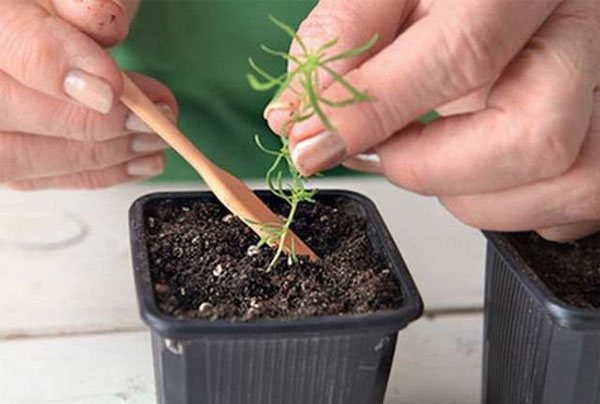
When the sprouts reach five centimeters in height, they are transplanted into separate containers:
- For these purposes, large half-liter plastic cups are suitable.
- A hole is made in the bottom of the glass and a layer of expanded clay is poured for drainage.
- For planting, use the same soil as for germinating seeds, but add more sand (two parts).
- Every month the plants need to be watered with fertilizers, and after a year they can be transplanted into pots.

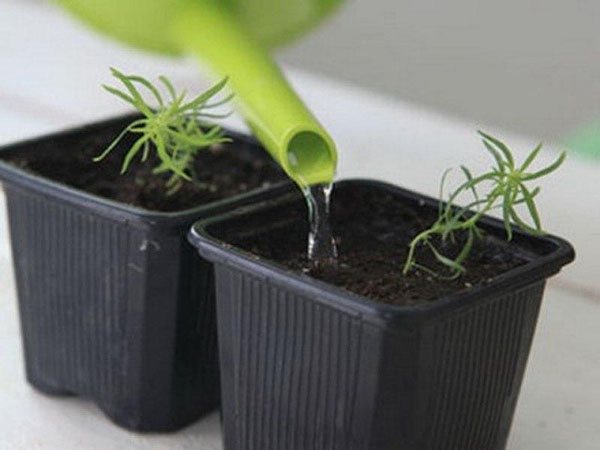
For growing cypress trees, it is preferable to use narrow and tall pots with a good layer of expanded clay drainage at the bottom.
For the first week after transplanting, it is better to hold the tree in diffused light, and then place it in a fairly bright place. North and east windows are well suited for a coniferous plant. If the balcony is glazed, and the temperature there does not drop below 15 degrees, in winter you can keep the cypress on the loggia. The first fruits on the tree appear at the age of five.
Types of cypress
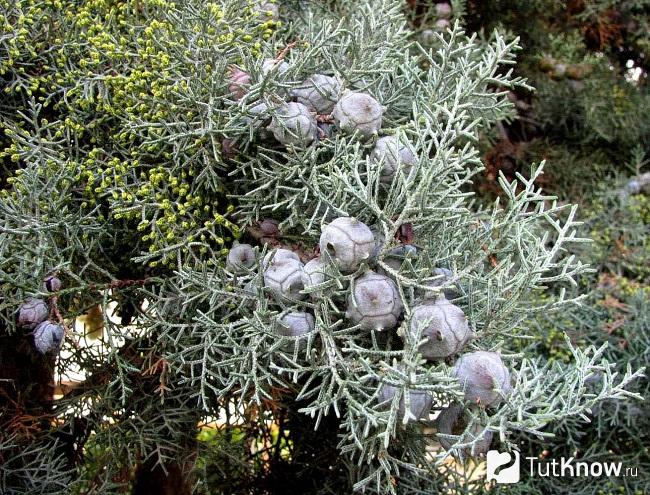
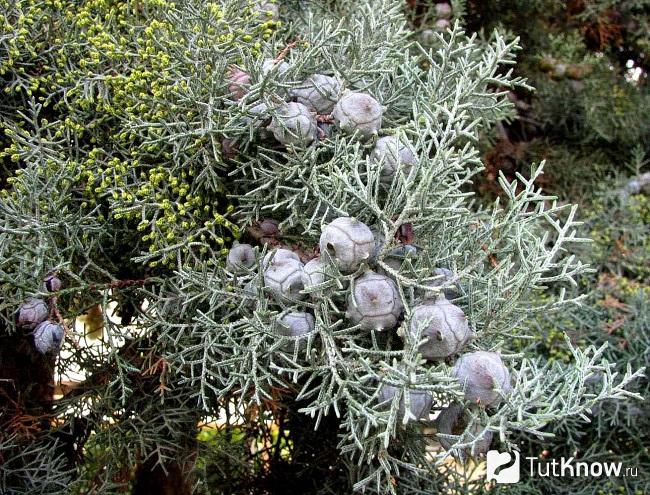
Here are just a few of the types of cypress plants:
- Arizona cypress (Cupressus arizonica)
mainly in natural conditions, it is found in Mexico and in the southwestern United States. Such a tree reaches a height of 21 m, easily tolerates frosts up to 20-25 degrees. The wood is heavier than other types. The plant is evergreen. - Kashmiri cypress (Cupressus cashmeriana)
is the tallest tree plant in Asia. For its growth, it “climbs” to heights in the range of 1250-2800 m above sea level. On the Black Sea coast of the Caucasus, the plant appeared only at the end of the 20th century. If the cypress passes the seven-year line, then it reaches a height of 25-50 m with a trunk girth of about 70-XNUMX m. Coniferous and evergreen, with a narrow pyramidal crown, the leaves are scaly, if the cypress is under the direct rays of the sun, then they begin to acquire a bluish color. - Saharan cypress (Cupressus dupreziana)
can be found under the name of the Dupre cypress. It is endemic to the territories on the Tassilin-Adjer plateau, which are located in the central Sahara (southeast of Algeria). To protect this species from destruction in the 20th century, a national park zone was created in the indicated area, and it is recognized as a UNESCO World Heritage Site. These trees reach 3 m in height with a trunk diameter of up to 1 m. Due to the merciless human activity, it is not possible to establish the natural outline of the crown. Their trunk is covered with a bark of a red-brown color, cut by elongated longitudinal cracks, it is often stripped off. The branches grow almost perpendicular to the trunk, and then have a bend towards the top, the shoots are thickened. In dense foliage, the outlines of scales, they are arranged like a cross, overlapping each other, have a slight squeezing, at the top with a sharpness. The scale reaches 1,5–XNUMX mm in length, its color is green with a bluish undertone. - Weeping cypress (Cupressus funebris)
found in China. Plant height can reach 18 m, the branches have a drooping appearance. This variety is often planted in cemeteries in China and Japan. - California cypress (Cupressus goveniana)
to date, several populations of this species are known that grow in isolation on the California coast. It can take both a shrub and a woody form, rarely growing above 10 m, if conditions are favorable, then the parameters in height can reach up to 50 m.There are several fruit-bearing trees collected in populations, reaching a height of 20 m and preferring to grow in sandy dunes. Crohn takes on a spherical or columnar shape, with moderate density. The bark covering the trunk is smooth to the touch or irregularly cracked. The branches are often heavily intertwined. The needles do not have a bluish bloom, and they do not have a gland that secretes resin. The size of male cones is 3–4 mm in length and up to 1,5–2 mm in width, while female cones vary in length within 1–3 cm. The shape of the latter is rounded, grayish-brown in color, and they have 3–5 scales. The color of the seeds is dark brown, black or bluish, the length is 3-5 mm.
What cypress trees look like, see below:
Propagation of cypress by cuttings
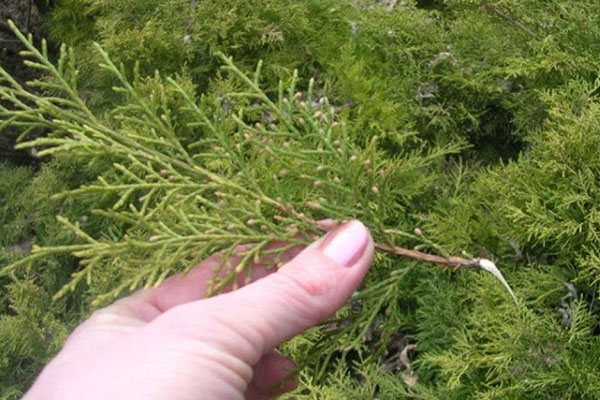
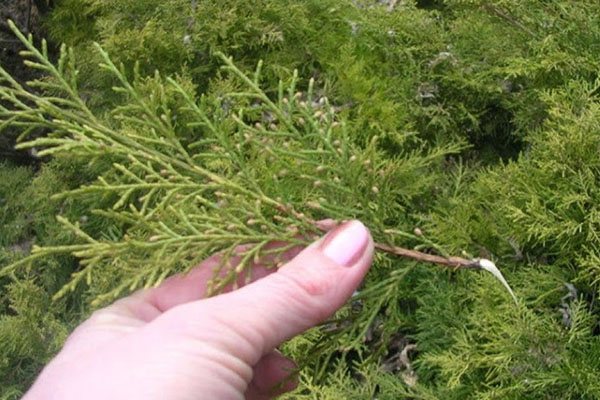
For this method of reproduction of cypress at home, April or the end of June is suitable. To begin with, choose a healthy mother tree. Cuttings must be taken from its upper part, from branches that are no more than three years old. The shoots selected for grafting are not cut, but plucked with a sharp, quick movement. In this case, a piece of bark should remain at the base. The cutting height should not exceed 20 centimeters.
Propagation of cypress by cuttings is the most effective way.
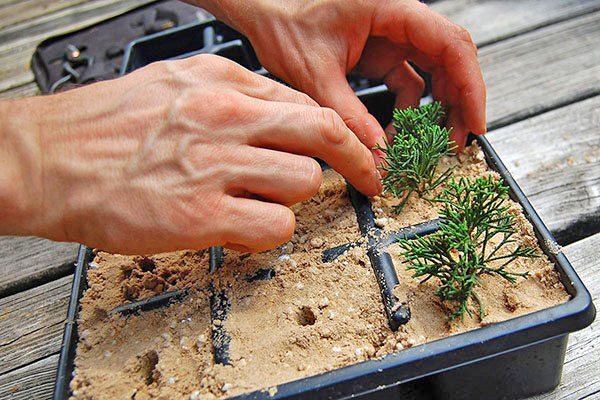
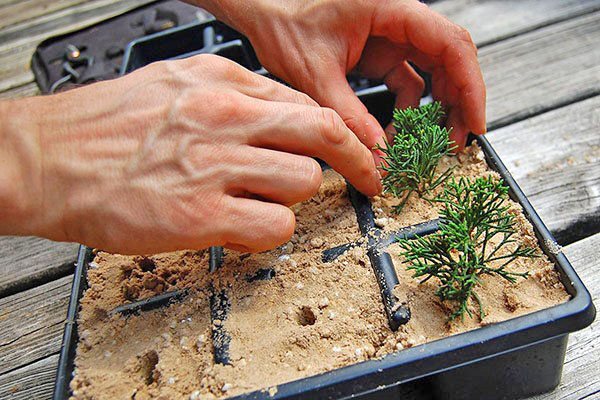
Cypress Rooting Methods:
- The needles on the bottom are removed. The branches are kept in a growth stimulator for about a day.
- They are planted in boxes prepared in advance. They are filled with sand, which is disinfected with a 3% solution of potassium permanganate.
- The container should have a fairly large number of drainage holes. They put it on a support (legs) so that there is free access to the bottom of the air.
- The branches are not deepened much, only 2-4 cm, covered with foil or placed in a greenhouse.
- The optimum temperature for root formation in cypress cuttings is about 20 degrees. At lower rates, the film is required. If the air temperature exceeds 20 degrees, then it will be enough to cover the branches with gauze.
- Twice a day, the cuttings are sprayed. In this case, watering as such is not carried out.
- Cuttings under film, cans or plastic bottles are periodically ventilated.
When the twigs have good roots 10 cm long, they can be replanted. It is better to use slightly acidic soil with the addition of peat. After two to three years, the trees are planted in their permanent place.
Indoor or outdoor cypress is a real decoration. With proper planting and care at home, a decorative tree will delight its owners and purify the air in the apartment, and slender green pyramids of large varieties will help create alleys or hedges near a country house.
Coniferous keeping at home – video
Methods of reproduction
Breeding of coniferous species is possible by seed and vegetative methods. The first one is rarely used because it takes a lot of time and is rather laborious. The vegetative method involves rooting cuttings or growing cuttings. Regardless of the method chosen, spring is considered the optimal time for cypress reproduction. Take planting material from healthy adult specimens. Seeds can be purchased at a garden center, ordered online, or harvested from your own plant at home.

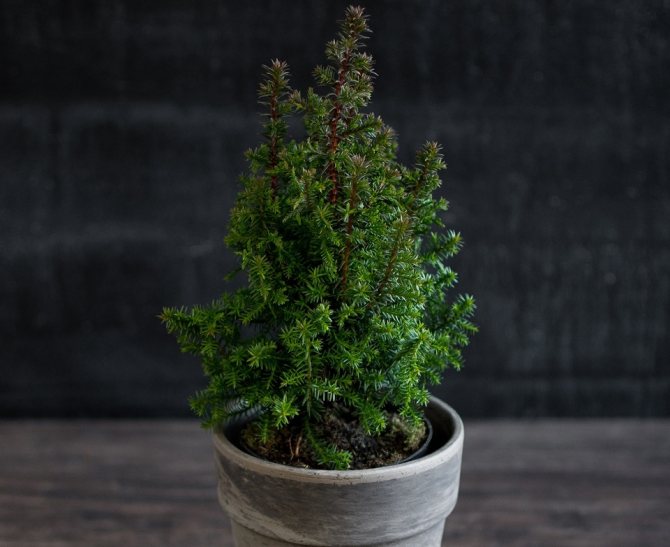
On a note! Reproduction by seeds does not preserve the varietal characteristics of the plant, but it will be possible to find out only after a few years, since they do not appear immediately.
Seeds
The germination capacity of coniferous seed material lasts about 15 years when stored in a sealed package at a temperature of + 0–5 ° C. Before sowing, it is necessary to carry out stratification for 2-3 months in a wet mixture of peat and sand in a refrigerator. Then transfer the container to a well-lit room at + 18–22 ° C. Create greenhouse conditions by covering with glass or a bag. Periodically ventilate for a couple of minutes, water, remove accumulated condensate.
It is permissible to plant seedlings when they grow up to 5 cm. In a mixture of peat and sand, subject to regular feeding, cypress can be left until next spring. Seedlings must be protected from drafts, sudden changes in keeping conditions, direct sunlight. In winter, be sure to lower the room temperature to +10 ° C. Before the beginning of the active growing season, transplant the grown seedlings as independent plants.
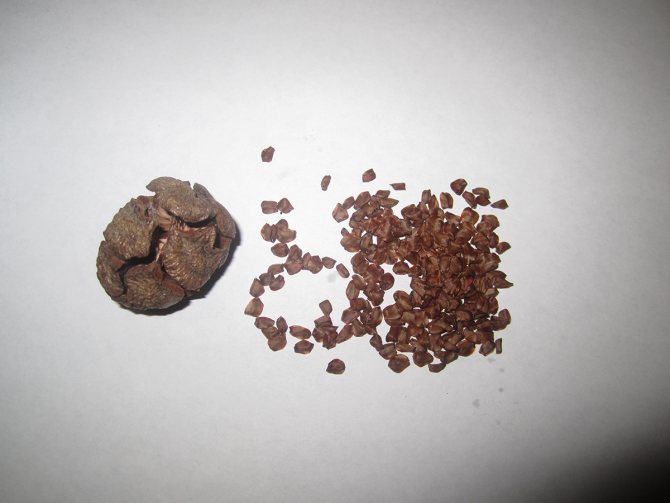
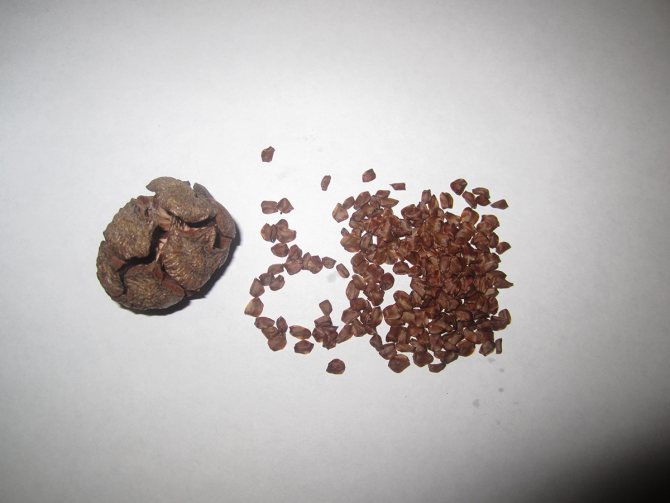
Cuttings
Planting material: shoots of this or last year. Cuttings that are in the stage of active growth take root poorly. The optimum length of material for grafting is 5–15 cm, for low-growing varieties – 5–7 cm. Peel the lower part of the needles, bury it with the prepared end in a wet mixture of peat and sand.
How to care for cypress cuttings:
- create greenhouse conditions with a glass jar, bag or cut plastic bottle;
- put on a well-lit windowsill without exposure to direct sunlight;
- air the greenhouse periodically;
- water as needed;
- after rooting, transplant into an individual container as an adult plant.
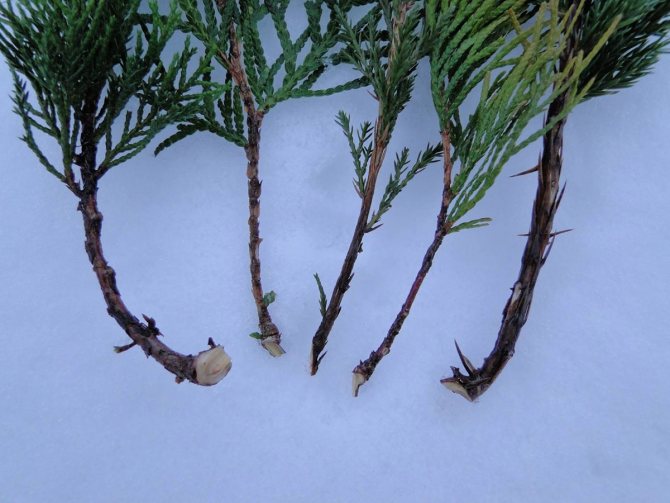

Layers
This propagation method is suitable for varieties with an open crown shape. Upright bushes produce curved plants. Place another container filled with nutrient medium next to the flowerpot. Bend a branch of a homemade cypress tree, cut the bark slightly at the junction with the soil, secure the shoot with a metal bracket or stone. Sprinkle with earth, moisten. Care for the layering consists in periodic watering, loosening the soil, spraying the above-ground part with warm water. When the root system is formed, separate the seedling from the mother plant, transplant into your own pot.
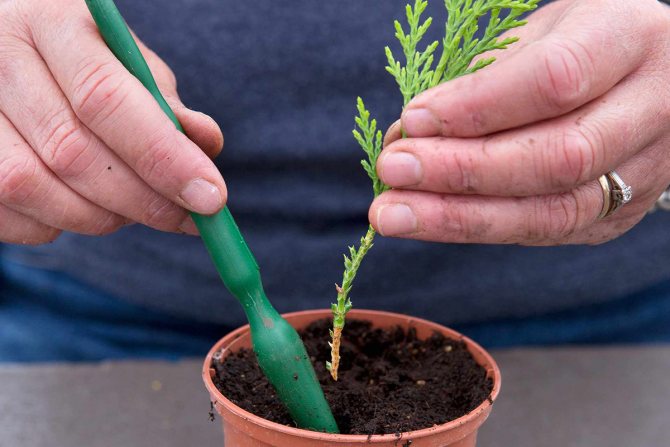

Botanical description of the plant
Cypress is an evergreen tree with a pyramidal crown that is silvery blue or green in color. The bark of the plant is red-brown in color. In their natural habitat, trees can grow up to 30 m, in indoor conditions, its growth is usually no more than 2 m.
The leaves of the plant are needle-shaped, often and tightly pressed against the branches. With age, each of them grows to the branch by two-thirds so that only the tip protrudes. Starting from the second year of the cypress’s life, small cones, male and female, ripen on it. Their diameter is about 1-1,5 cm.
Inexperienced gardeners often mistake cypress for home cypress. You can distinguish them by the color of the needles. The first has a dark green color, and the second has a light green. However, the care of these two plants is very similar.
Video: Description and cultivation of cypress
Features of cypress
Cypress is an evergreen tree (less often a shrub) with a pyramidal or spreading crown. The cypress family has 19 genera and about 130 species, which include not only cypress trees and shrubs, but also thuja with juniper. Although cypress is similar to conifers, it cannot be called ephedra, because cypress leaves are only needles at a young age. In plants over 4 years old, they already have a scaly shape.
Scales and cones of cypress Some of the “scales”, as the tree “matures”, grows to the branches, and only the top remains free, which gives the cypress trees a special decorative effect. These beautiful southerners are especially good when they have bumps that have a very intricate pattern. Cypress cones are male and female, and they quite happily coexist on the same plant.
How to raise a slender southerner in a suburban area? Let’s figure it out …
Features of growing a plant from seeds
Cypress is a heat-loving plant, for this reason it is necessary to grow it at home from seeds, ensuring the optimal temperature and avoiding drafts.
Before planting the material in the soil, it is imperative to do stratification. To complete it, you need to keep the seeds in the refrigerator for about 3-4 months. This procedure is necessary for the cypress to sprout normally. Before planting in the soil, the seeds must be soaked in warm water for 10-12 hours so that they swell.

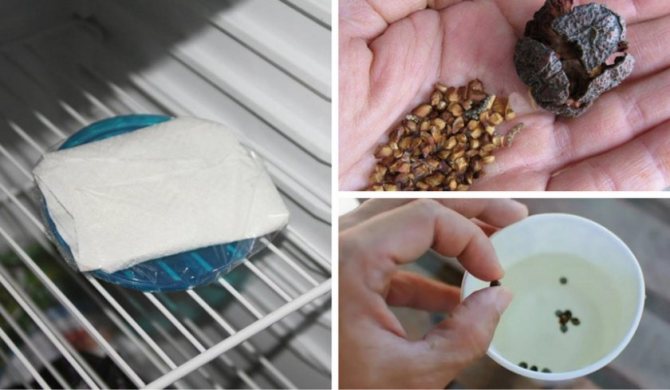
How to grow cypress from seeds
Having prepared the seeds, you can proceed to the next steps. Proper planting and care of the seedlings must be carried out. Further, all stages of cultivation will be considered in more detail.
Correct landing
The optimal time for sowing is April – May. To plant seeds, you need to follow these steps step by step:
- Fill the prepared pots with a mixture of earth with leaves, peat mixture, turf and sand in a ratio of 2: 1: 1: 1.
- Lay out the seedlings on top and cover them with a layer of soil up to 1 cm high.
- Spray the top surface of the ground with a spray bottle.
- Place containers in a warm place and cover with foil.
- Open the greenhouse every 3-4 days.
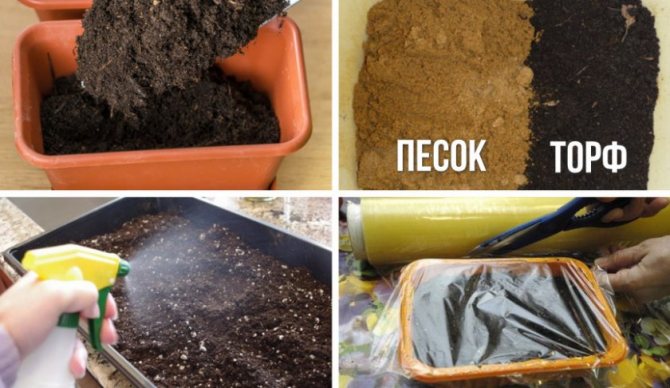

Seed care
Sprouts should break through 2-3 weeks after planting. When this happens, the shelter must be raised and the seedlings must be sprinkled with a mixture of sand and earth.
It is necessary to provide the sprouts with good ventilation, for which it is necessary to remove the film more often, and after a while get rid of it completely. It is also necessary to maintain optimal soil moisture, avoiding overflow and dryness of the soil.

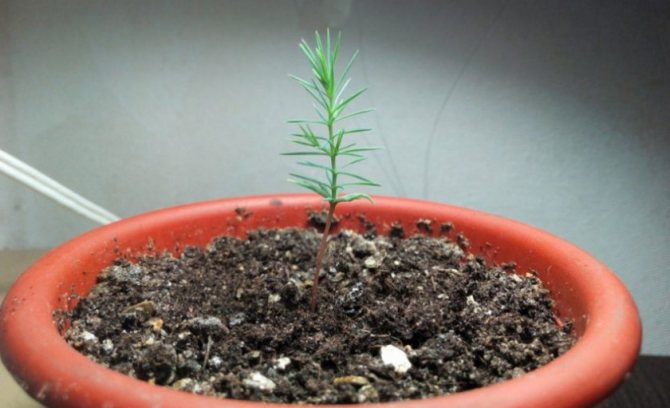
Cypress care tips from experienced florists
- Cypress needs good lighting, but not direct sunlight, but diffused light.
- The earth ball in the plant pot should always remain moist.
- The plant needs daily spraying and regular watering.
- In case of drying out of parts of the plant (due to sunlight or extreme heat), it is necessary to prune the damaged branches to a living bud.
- The plant is easy to prune and quickly recovers, it can be given any shape.
Transplanting seedlings
When the sprouts reach a height of 5 cm, they need to be transplanted into separate containers. To perform the transplant correctly, you must follow the instructions:
- Take plastic cups with a capacity of 0,5 liters for transplantation.
- Make a hole in the bottom.
- Pour a 2-3 cm layer of expanded clay into the glass for drainage.
- Pour soil from earth with leaves, peat mixture, turf and sand into a glass in a ratio of 2: 1: 1: 2.
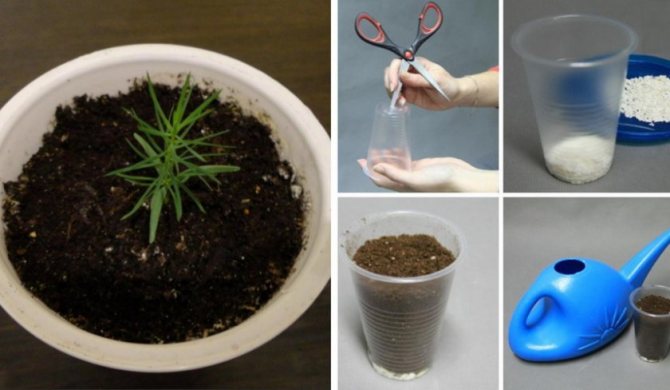

Plant transplantation
Young seedlings need to be transferred to a new pot every spring. When the cypress slows down the growth of the aboveground mass and rhizomes, the procedure will be needed every 2-3 years. Transplanting conifers is carried out by the transshipment method, so that the plant quickly adapts to the changed conditions. For adult specimens, it is enough to change the top layer of the soil substrate.
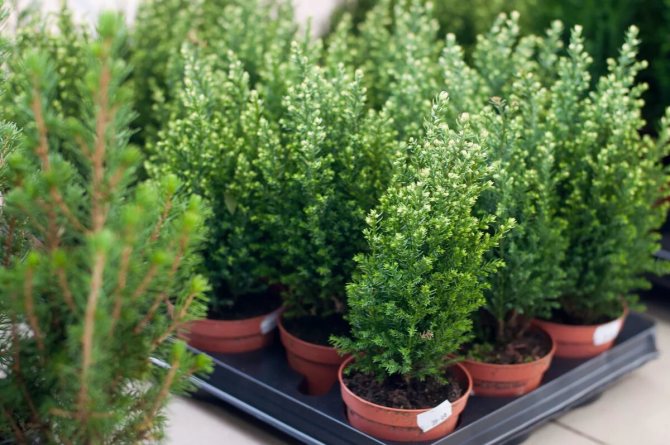
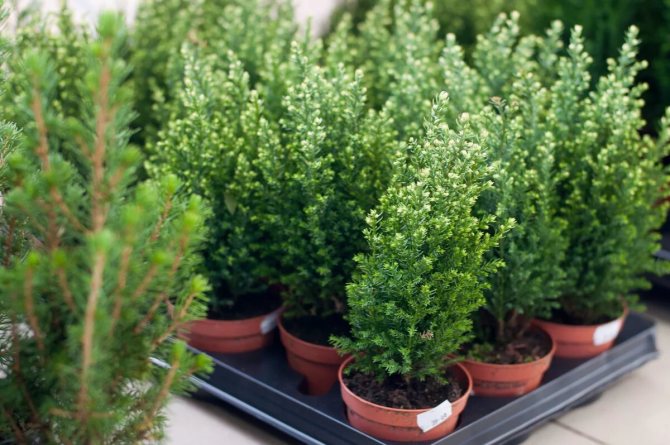
The sequence of actions at home:
- Prepare the container and soil.
- Water the seedling abundantly a few hours before the procedure, then remove it with the soil, trying to keep the earthen lump intact.
- Fill the flowerpot 2–4 cm with drainage, then add 4–5 cm of soil mixture.
- Transfer the cypress to a new pot.
- Fill the resulting voids with soil substrate. It is impossible to deepen the root collar.
- Pour under the root, spray the above-ground part with warm water.
Cultivation and care of a plant
After planting the sprouts, the cypress must be properly grown and cared for. You should also take measures to prevent damage to the plant by pests or diseases. Further details about all the intricacies.
Watering
Despite the fact that indoor cypress is quite hygrophilous, you should be careful when watering. Overflow is detrimental to the plant, since stagnant water can provoke root rot.
Excess water from the sump must be removed after watering. The soil should dry out a little between wetting procedures. From spring to autumn, the soil can be allowed to be slightly damp. In winter, watering should be reduced. At a room temperature of about + 8 ° C, the tree needs to be moistened every 10 days, about + 13 ° C – after 7.
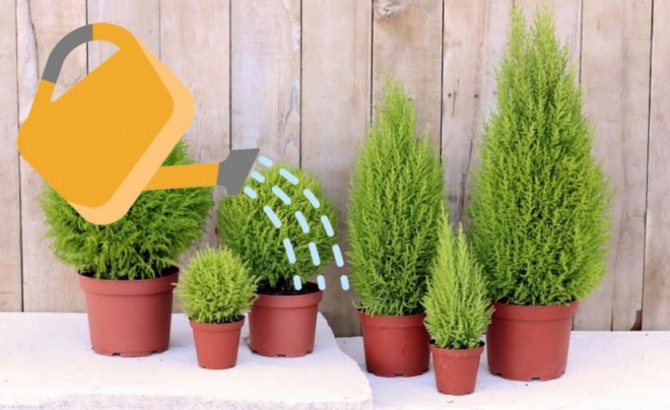
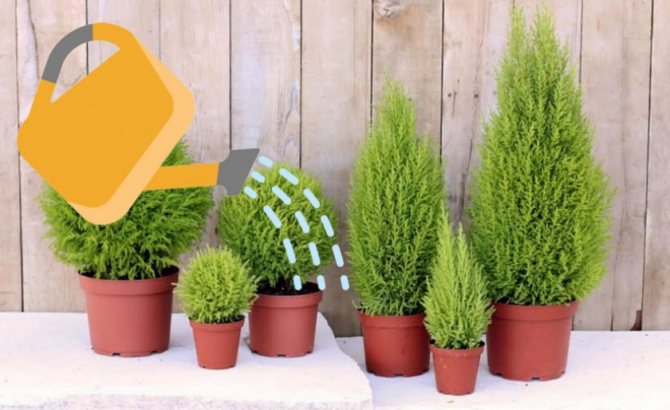
Wintering
When growing cypress, seasonality must be observed: in summer it should be warm, and not hot during the cold season. In winter, the plant should be kept in a cool room, the temperature in which will not be higher than + 15 ° C, ideally it should be +8. + 10 ° C.
Additional fertilizing
Homemade cypress needs regular feeding. For this, it is necessary to use special complex additives for conifers. For example, “Activin” or “Rosaffert”. In the spring and summer, fertilizer should be applied every 2 weeks. In winter, you do not need to feed the plant.
Trimming
The tree initially has a crown of the correct shape, which, over time, occasionally needs to be trimmed and corrected. The main pruning is done in the spring. It is needed not only to give the plant a perfect look, but also to stimulate the growth of new shoots. At the same time, long shoots and dried branches are removed.
Cypress pruning should be done once a year. The tree will begin to stretch upward and the side shoots will grow slowly, allowing the crown to form naturally.
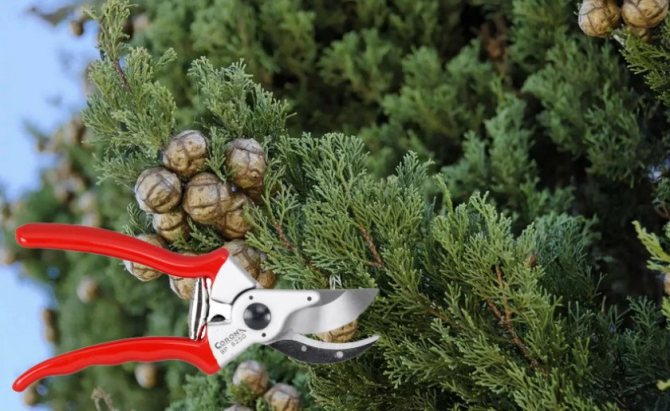
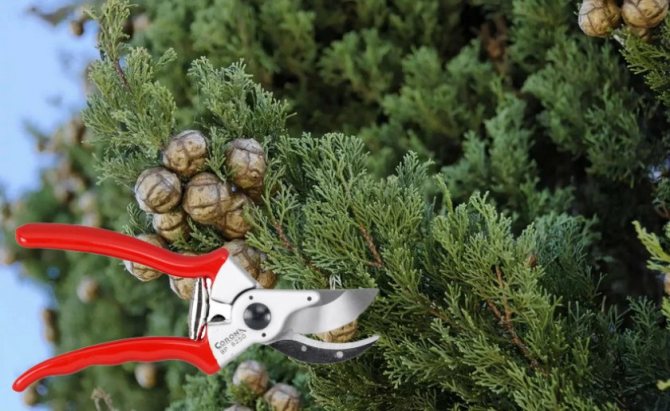
Transfer
Young trees should be replanted every spring. April or May is most suitable for this procedure. This is necessary to increase the aeration of the soil, as well as to improve the nutrition of the young plant. After reaching the age of three years, the trees need to be replanted as needed.
The root system of these plants does not react well to outside interference and destruction of the earthen coma, therefore, the transshipment method is used for transplanting. It consists in replacing only the soil that is easily shaken off the roots of the cypress taken from the previous pot.
For a transplant, you must follow the following step-by-step instructions:
- Prepare the soil from deciduous humus, peat, sand and sod land in a ratio of 2: 1: 1: 1.
- Place a 2-3 cm high drainage on the bottom of the planting container.
- Pour a layer of soil into the pot, on which to set the root ball of the tree.
- Add the mixture to the container so that it is filled, but the root collar of the plant remains above the ground.
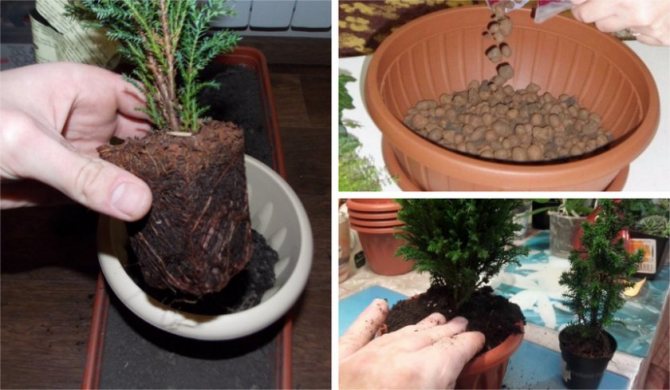
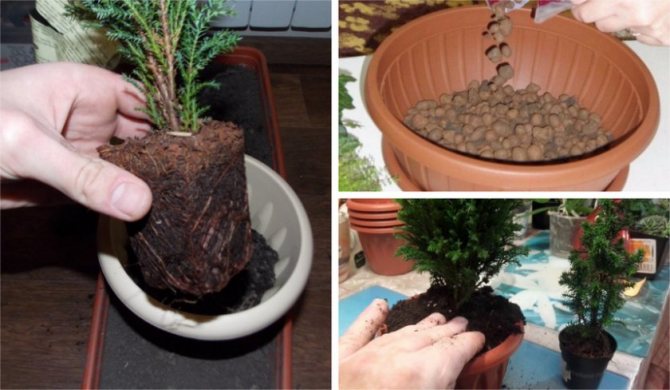
Types with photos and names
Cypress is widely represented in landscape design, but it is also found in home flower beds.
Not all types and varieties of cypress are chosen for the maintenance of the house., but only those that are easy to care for and take root well indoors. Often inexperienced gardeners confuse cypress with thuja; there are differences between cypress and cypress.
The cypress family includes both the cypress itself and cypress and thuja. If you answer the question about how thuja differs from cypress, then the answer is simple – almost everyone: the structure of the needles, and the type of bark, and wood, and sizeand.
Cypress (chamaecyparis) The cypress family is a false cypress with flatter branches and smaller cones. Here we will get acquainted with some of its types.
Pea (Chamaecyparis pisifera)
The species lives in Japan. It includes a large number of varieties with different crown shapes. The overwhelming majority of them are shrubs; there are also specimens with threadlike shoots hanging beautifully above the ground. It has thick needles and smooth bark.
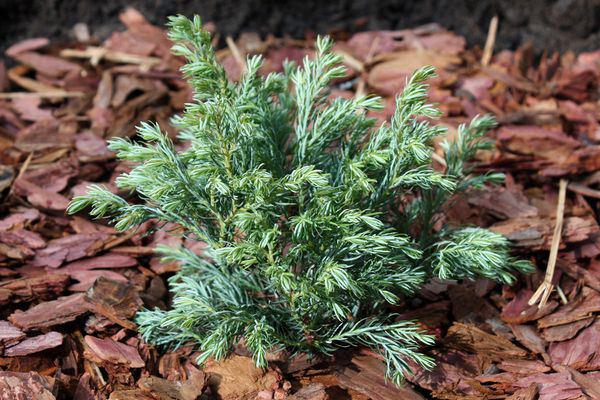
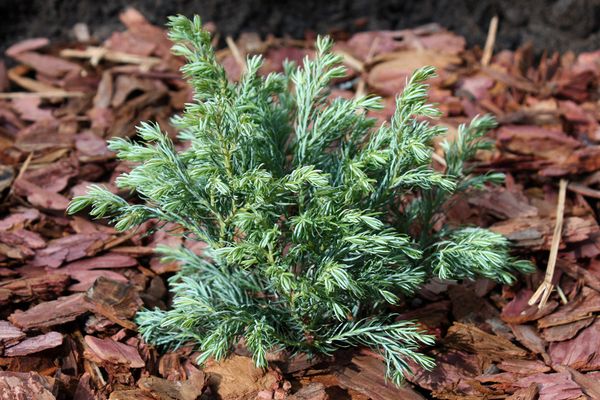
Лавсона (Lawsoniana)
Lawson is native to Asia and North America. Loves wet soil, grows up to 80 meters. There are plants that are 500-600 years old.
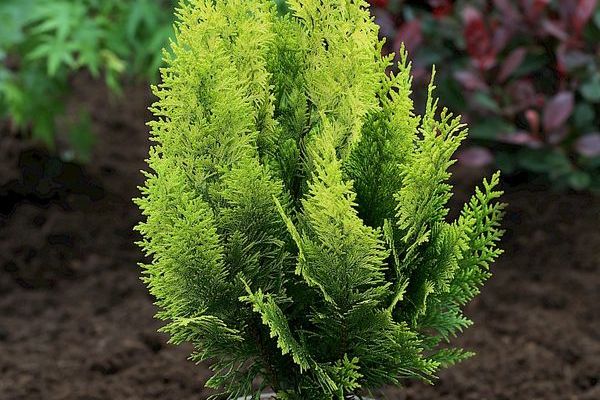
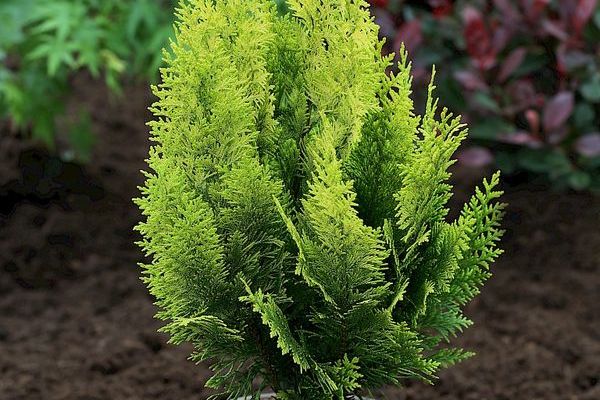
It has a conical crown, the top of which often tilts to one side. The thick bark is colored brownish-red, the needles are scale-like.
Dumb (Obtusa)
The dull cypress tree, or hinoki, descended into Europe from the mountainous regions of Japan. In nature, its height reaches 50 meters, cultivated species grow no higher than 5 m.
The blunt cypress is picky about humidity, loves its high values. The bark is smooth, light brown, the cones are round.
Thyoides
The cypress is native to North America. His crown is formed in the form of a narrow cone. The needles are decorated with light blue or dark green bloom.

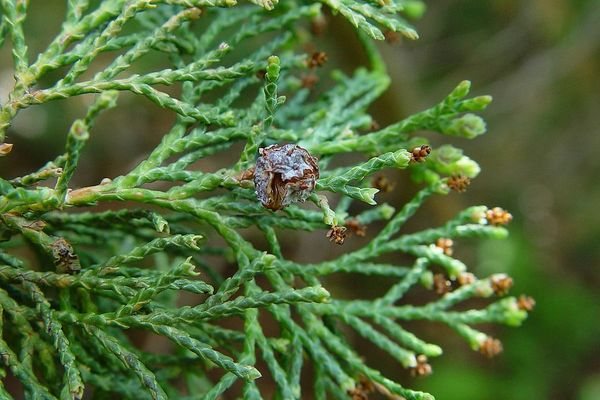
Young trees dress in needle-like needles, which eventually acquire a scale-like shape. Among the varieties of cypress trees there are shrubs (up to 1,5 meters) and trees (up to 35 meters).
Нутканский (Nootkatensis)
Inhabiting the Pacific coast of the United States, Nutkan cypress adorns it with tall, up to 40 meters, trees. His crown is similar to a pin, branches are spreading, drooping.
The bark is gray-brown. If the bark is broken or the branches are damaged, it exudes an unpleasant odor. Prefers to grow in high humidity.
Breeders crossed it with a large-fruited variety and got another beautiful tree – the Leyland cypress. This species is distinguished by its rapid growth rates; its needles do not lose their dark green color even in winter.
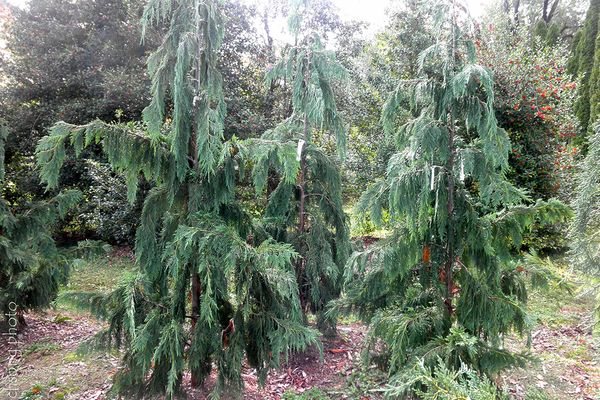
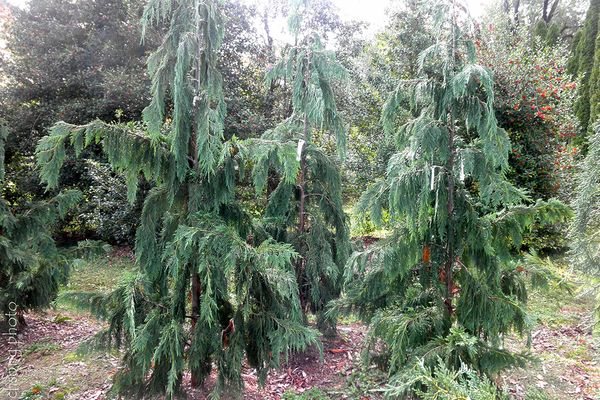
Goldcrest Wilma
A miniature Christmas tree with narrow leaves – this is what Goldcrest Wilma looks like. Because of the peculiar color of the shoots, it is called golden. Its leaves smell like lemon.
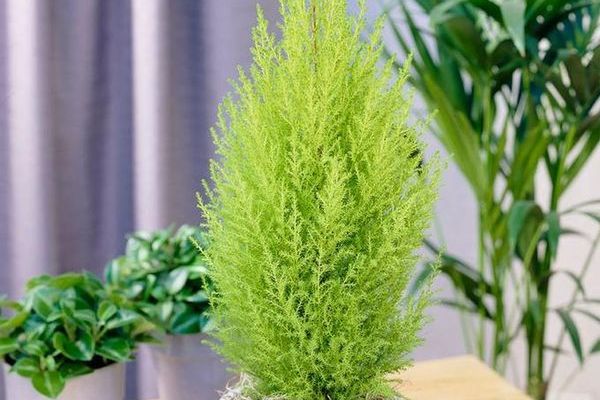
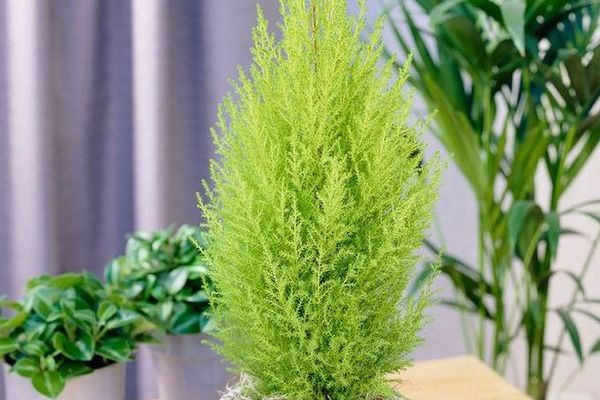
The variety was specially bred for home keeping. The habitat of the species cannot boast of greenhouse conditions, so it calmly tolerates the shade, does not need high humidity, and develops slowly.
Siberian juniper
Siberian cypress is low (up to 1 meter). It grows in the harsh conditions of the Far East and Siberia, it is found on the territory of Mongolia, Central Asia, North America. For a year, it adds only 5 mm in growth. Has a dense crown.
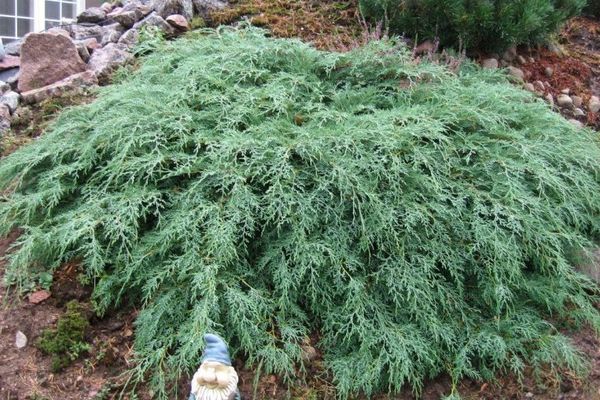
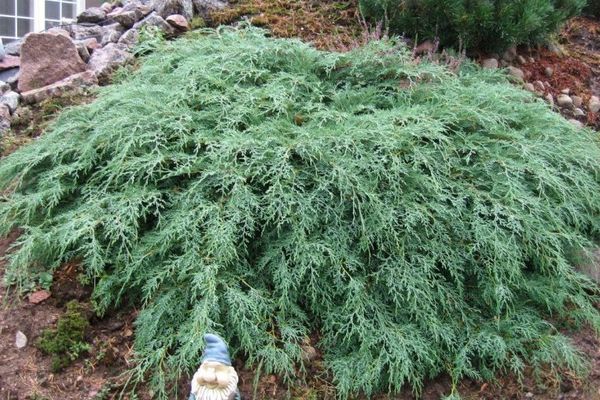
Elwood
An ornamental cypress tree native to China, North America and Japan. The home cypress is unpretentious in care, it feels good at home. In nature, its height reaches 3 meters. Adds 4–6 cm in height per year.
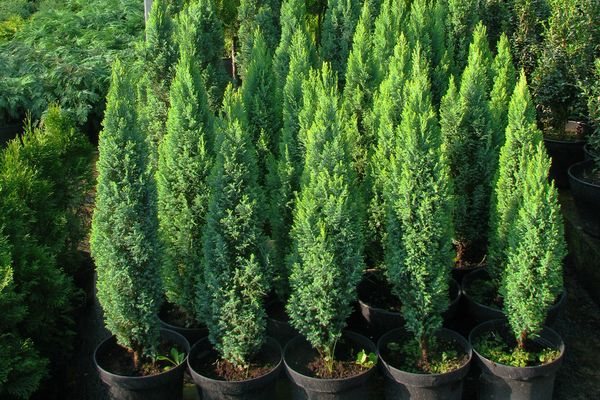
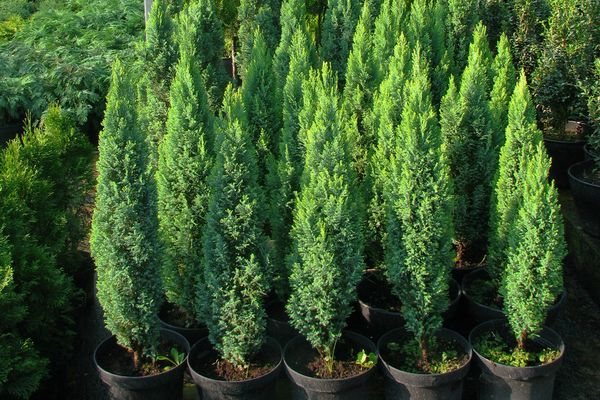
Arizona
The only species of cypress growing in the southwestern part of America. Drought-resistant, likes good lighting. Pointed foliage is painted in gray-green tones.

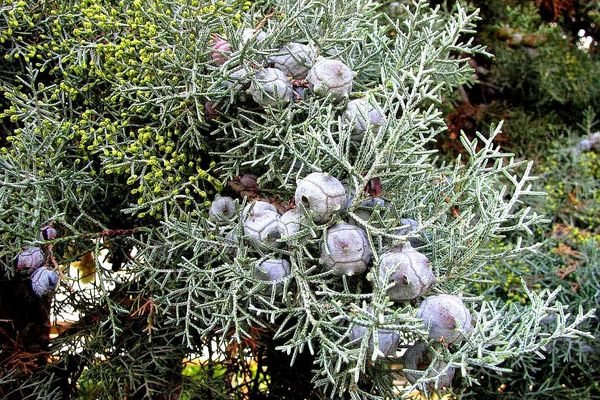
The crown is conical, smooth in young plants, then becomes fibrous, covered with combs.
If you grind the foliage of an Arizona cypress tree, you can catch an unpleasant smell.
Take note! Sometimes in the store on a plate with a flower is written “cypress mix”, which means the presence of two or three types of plants in the pot.
